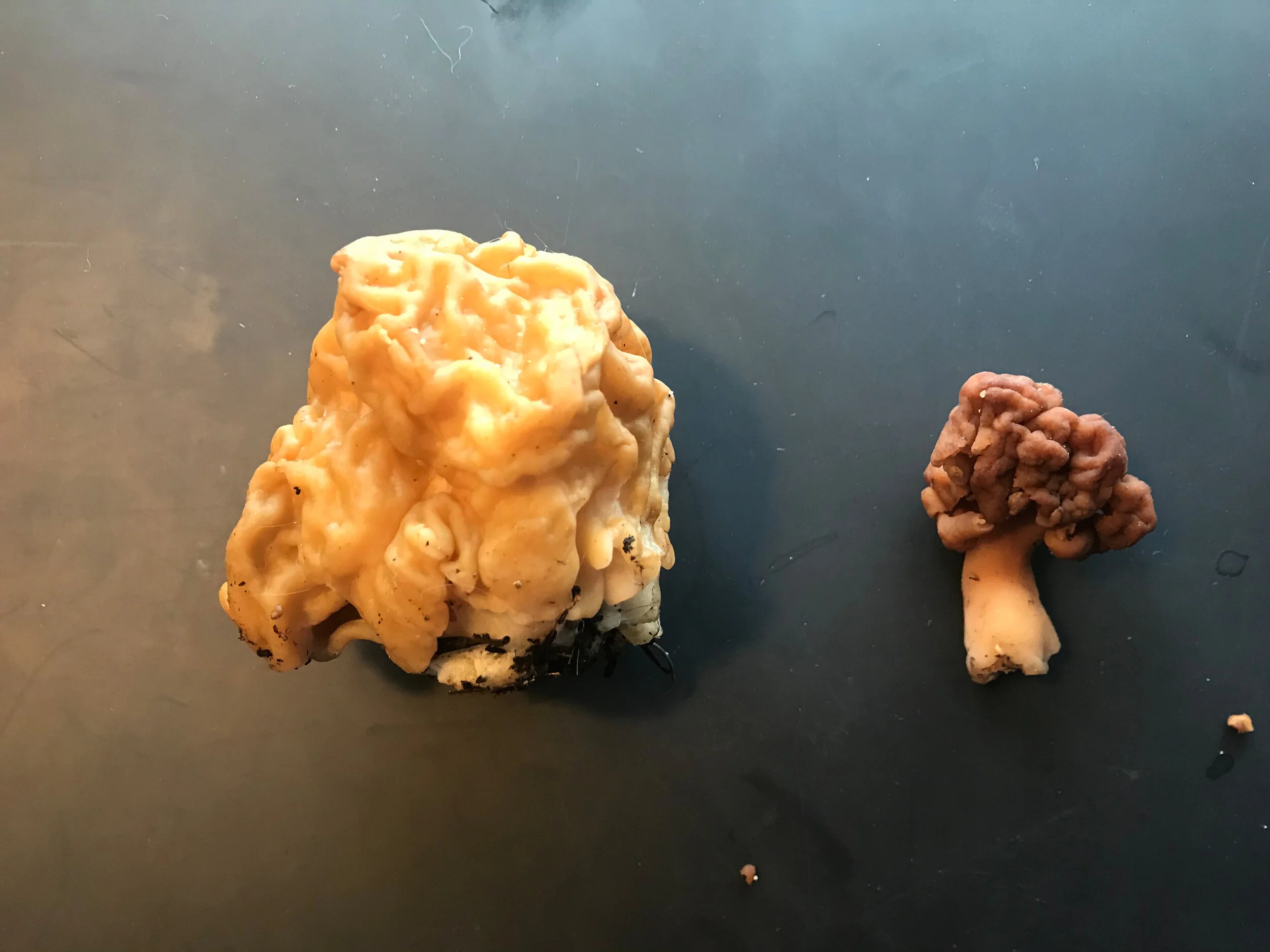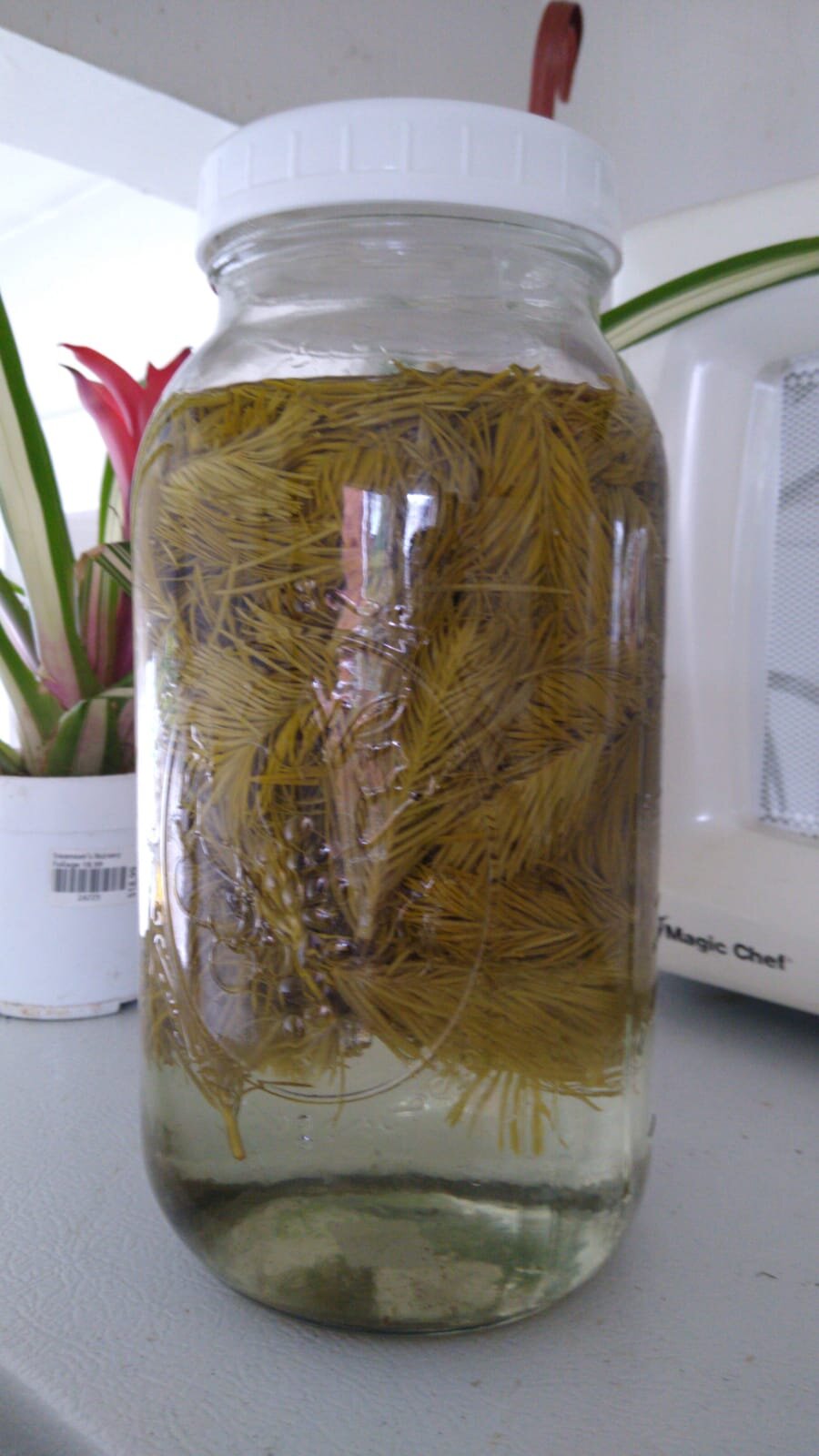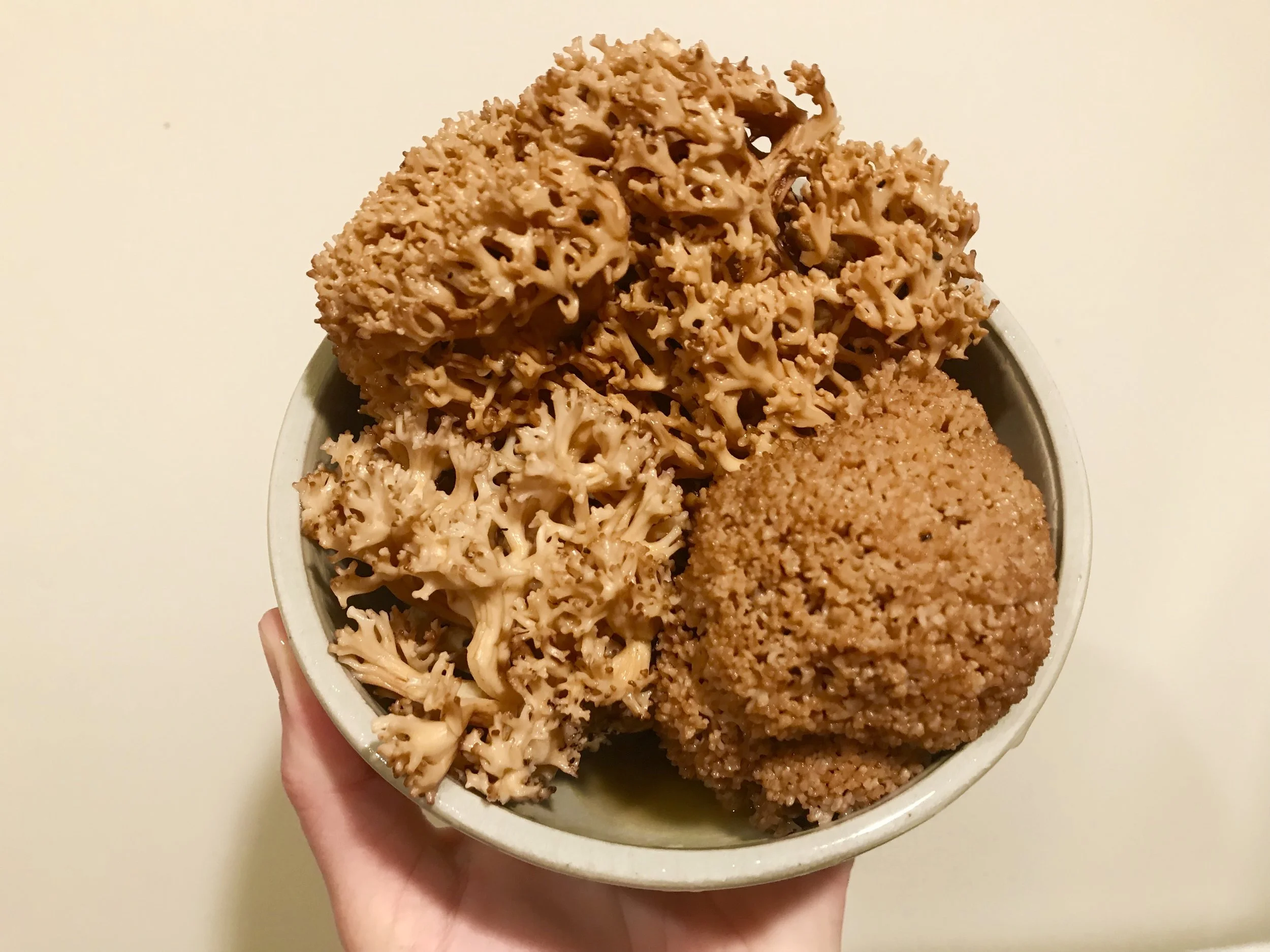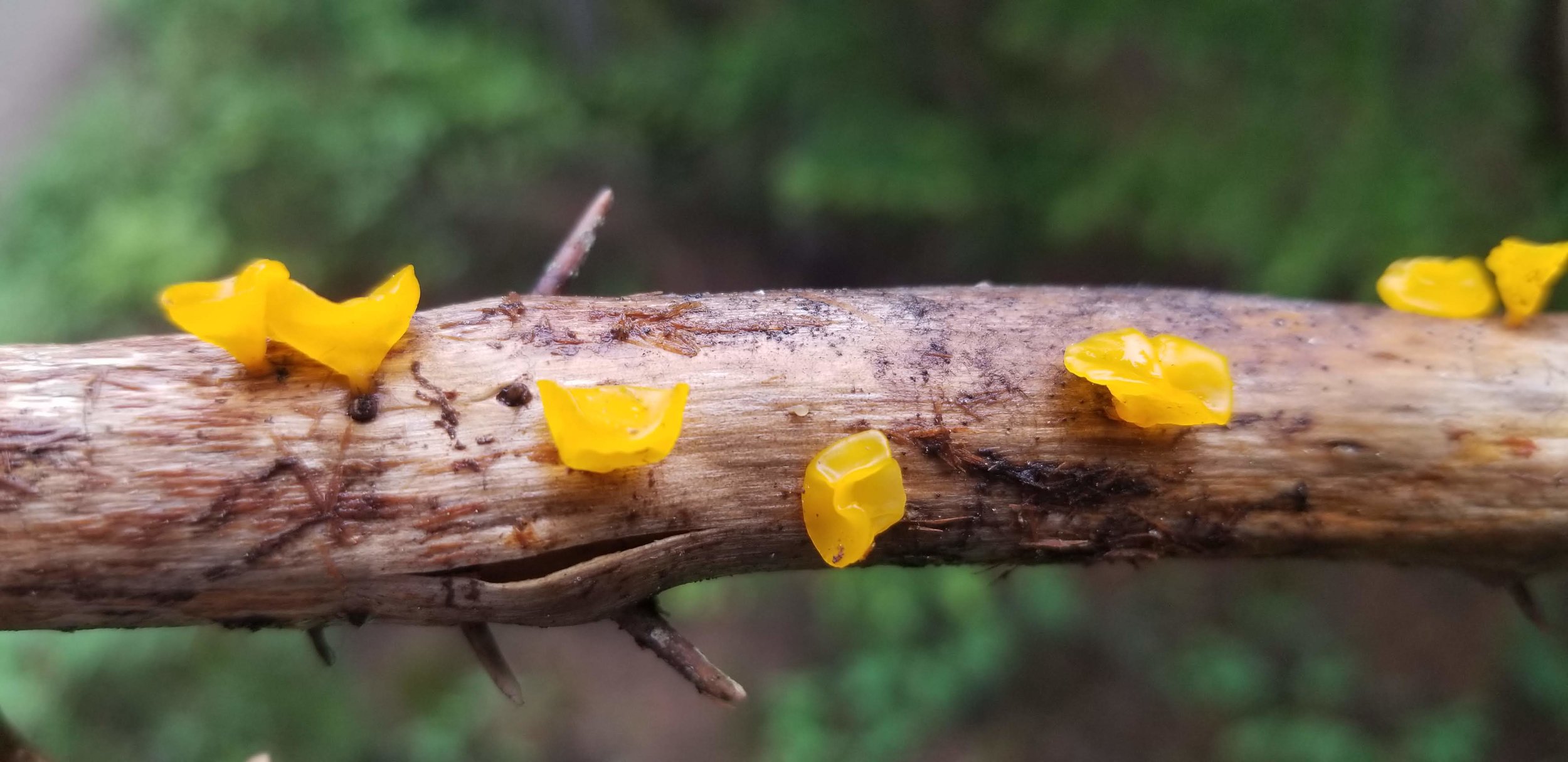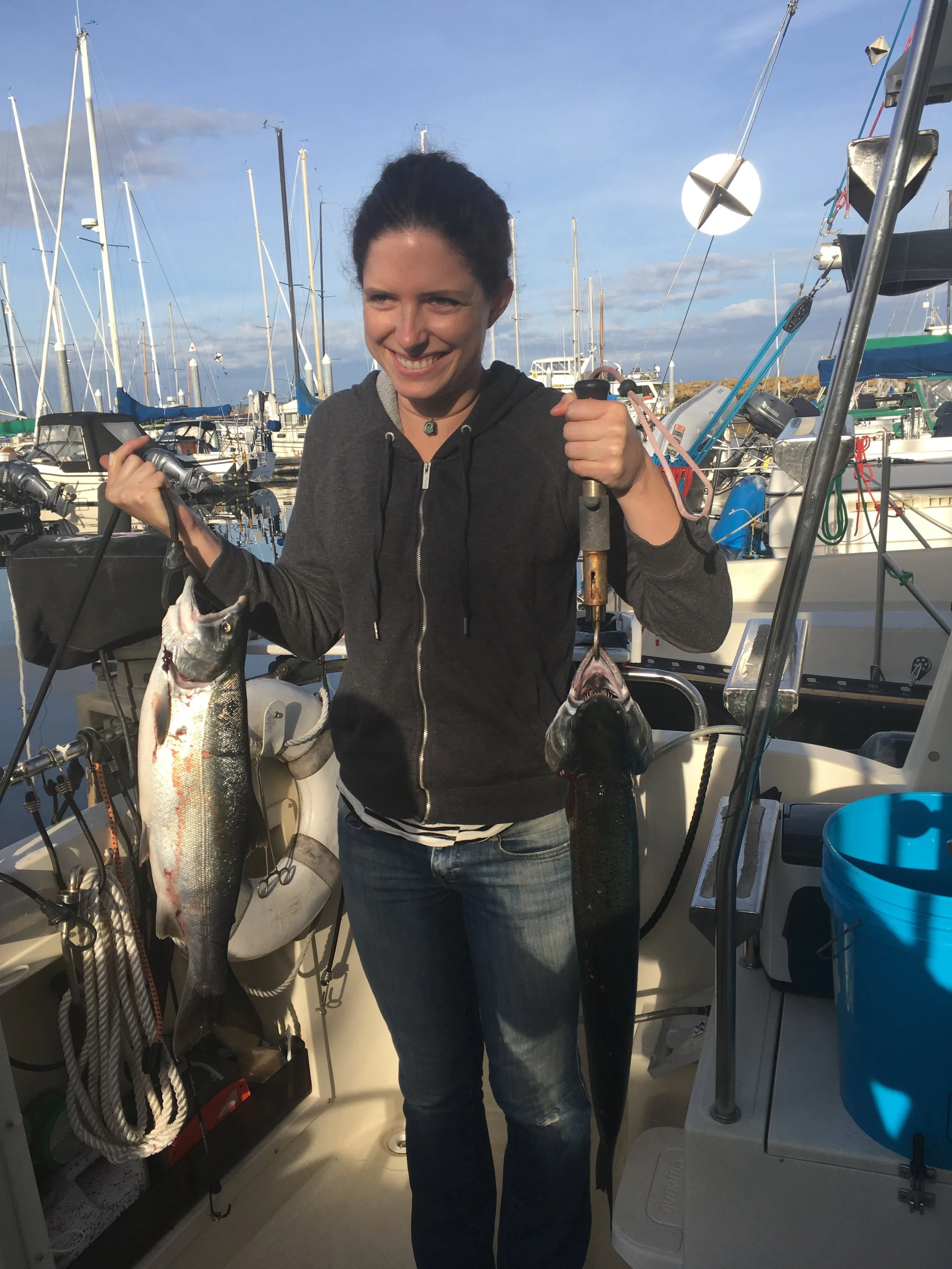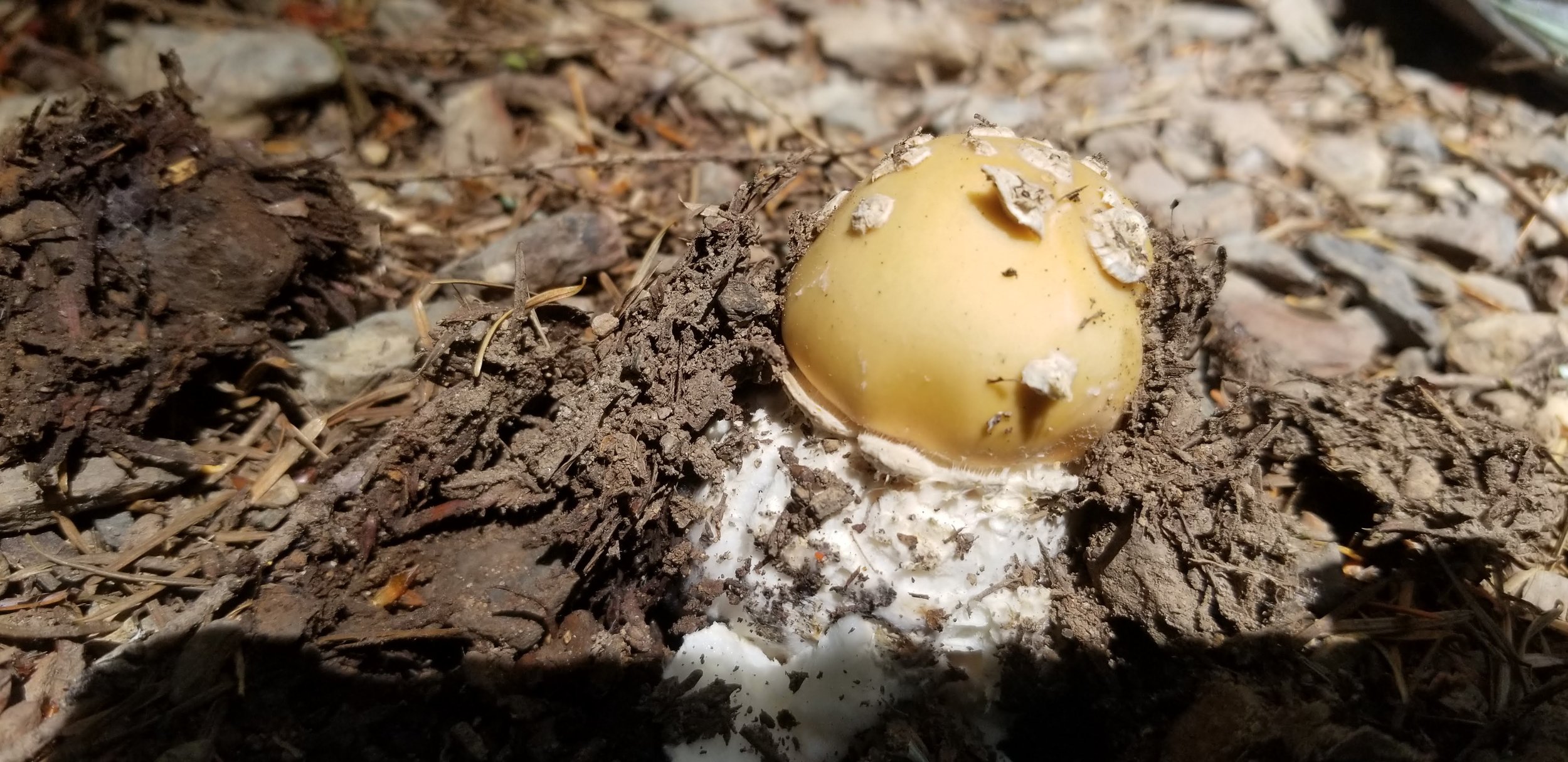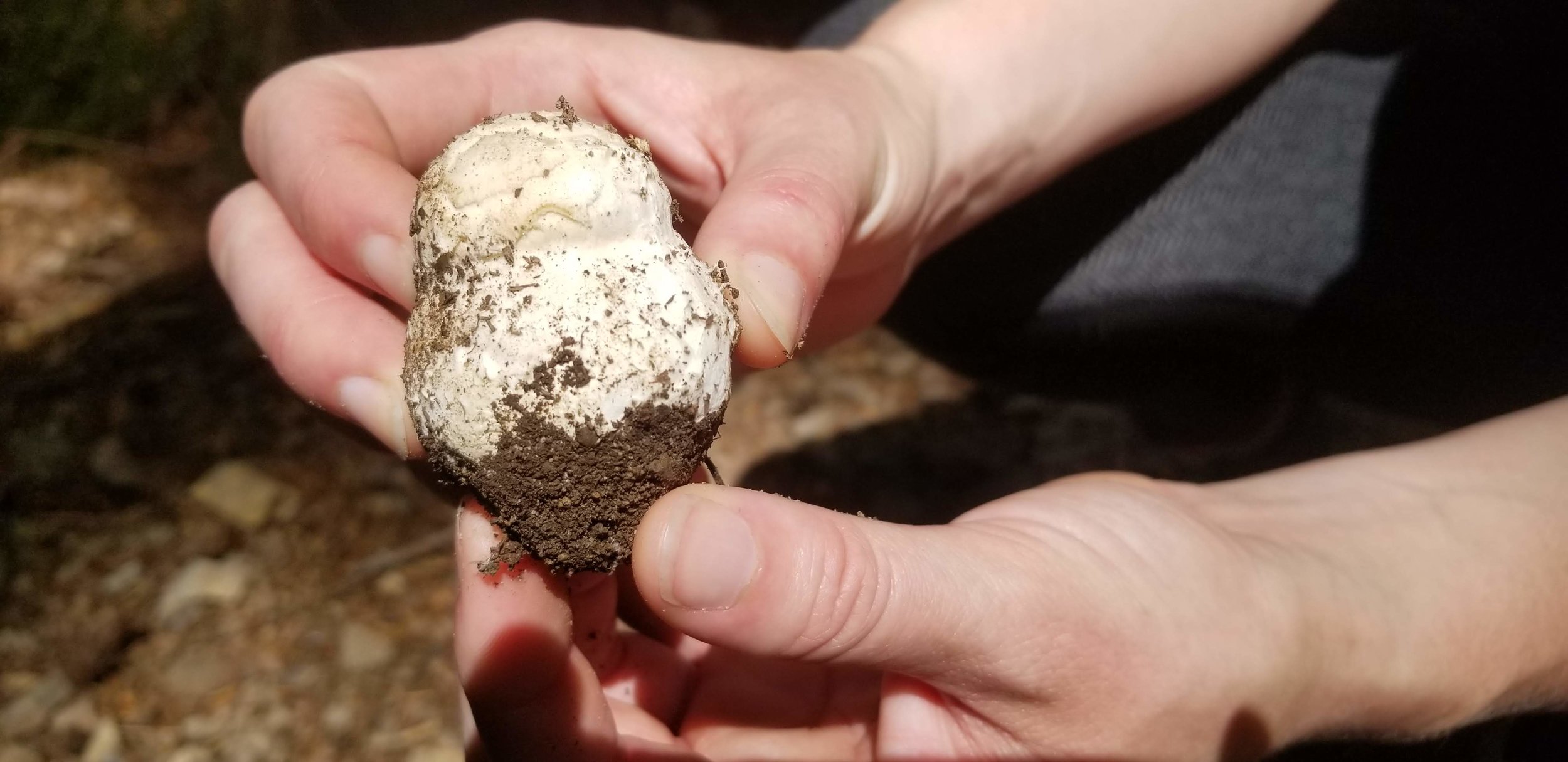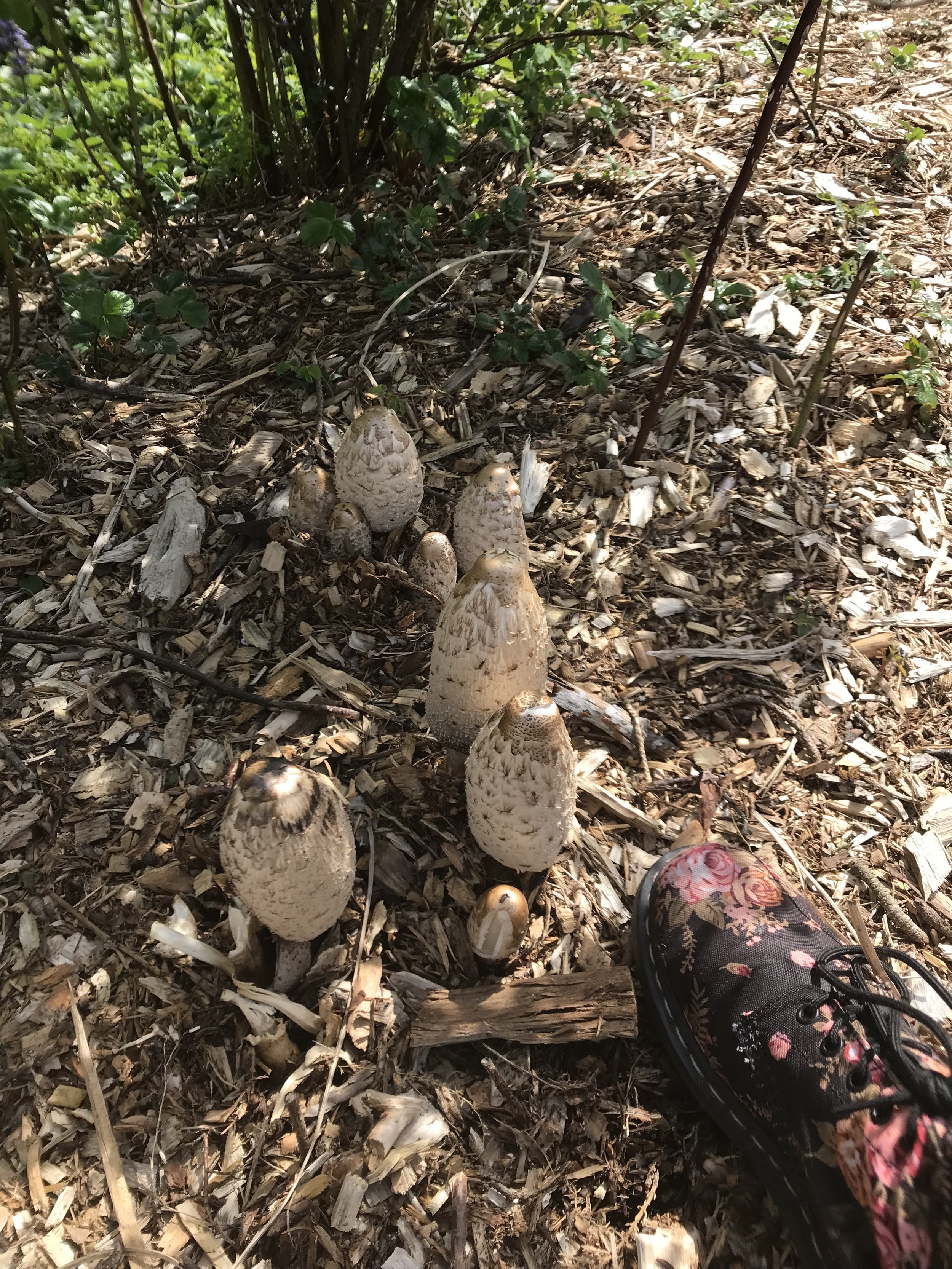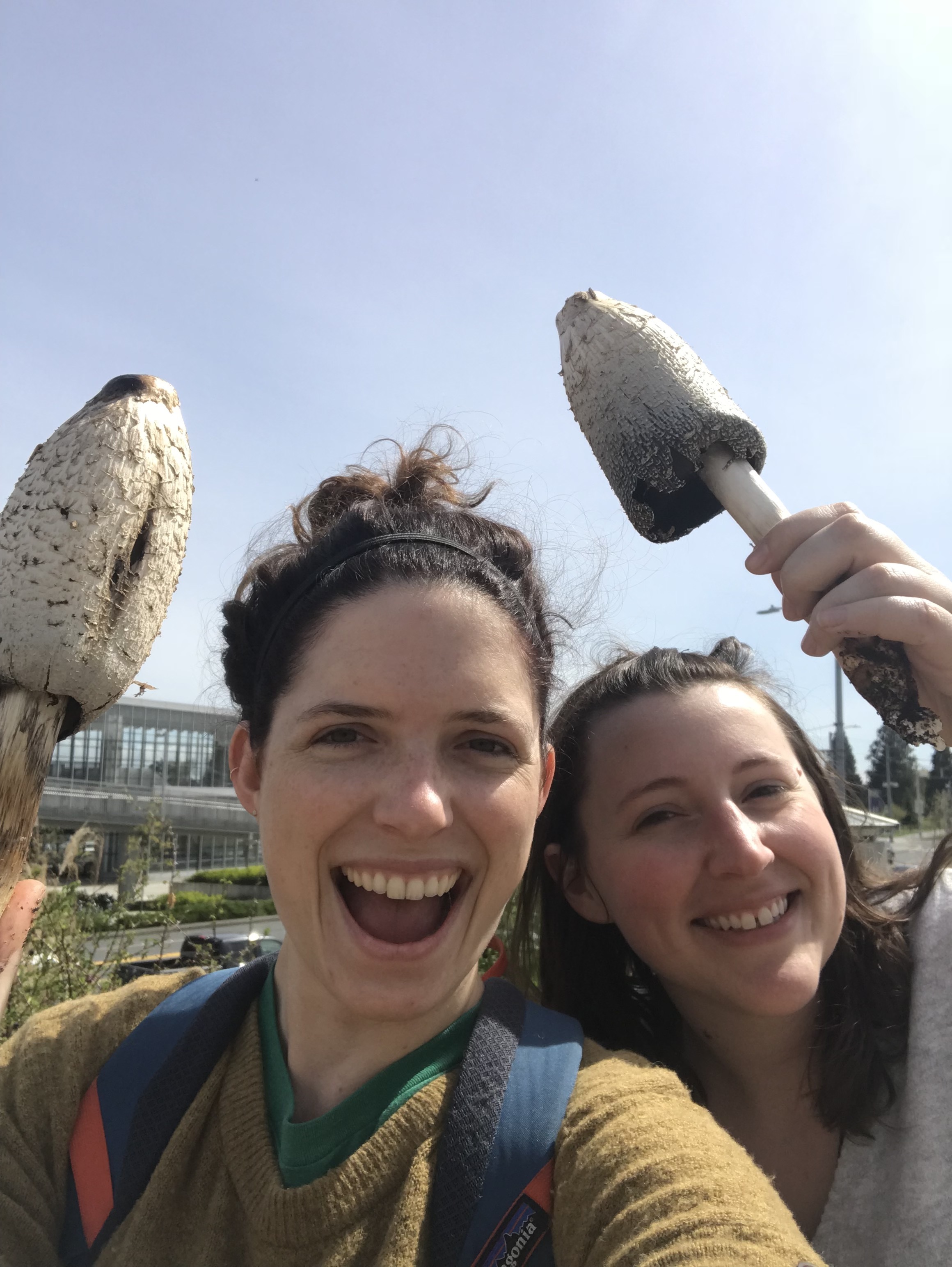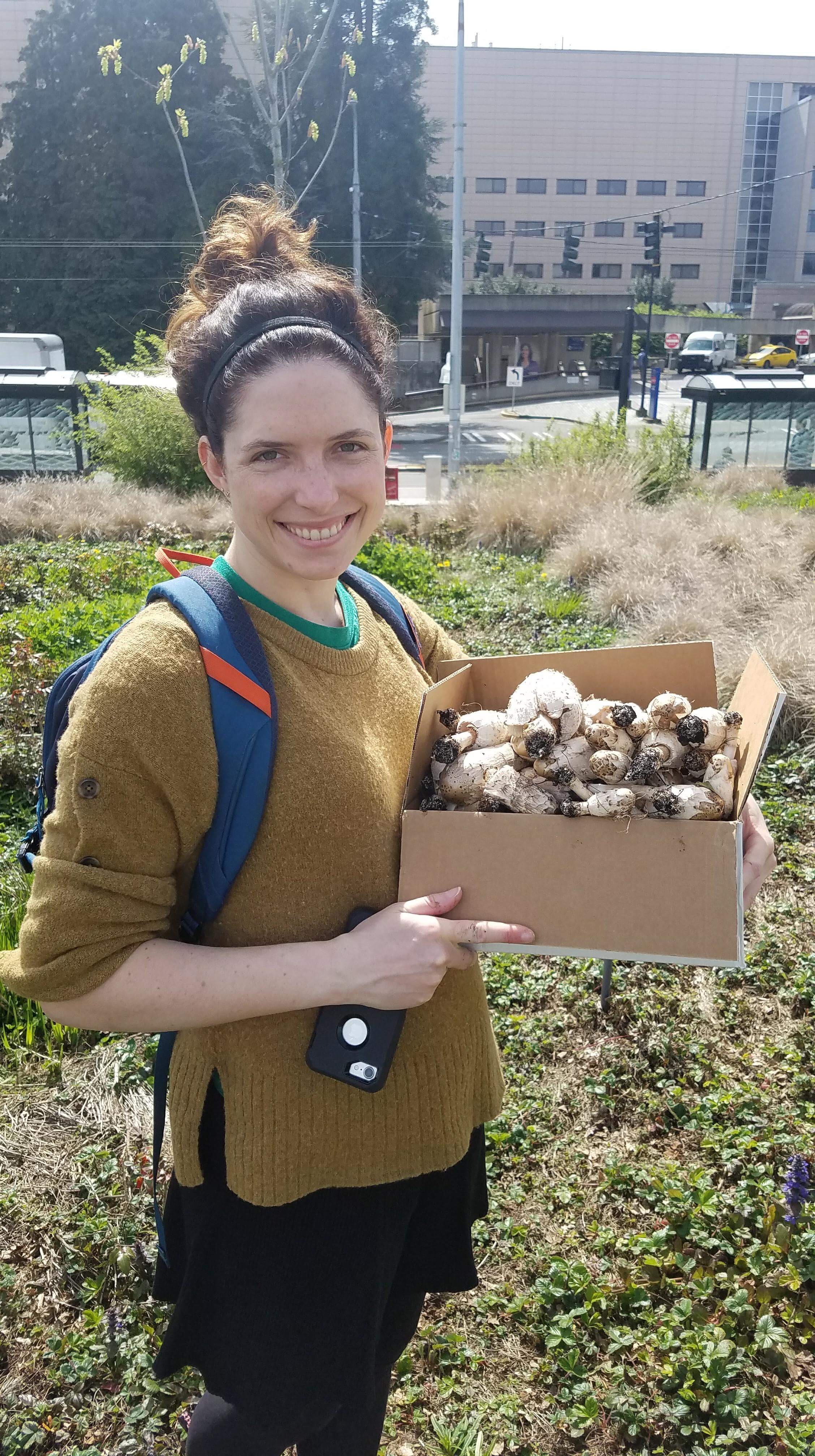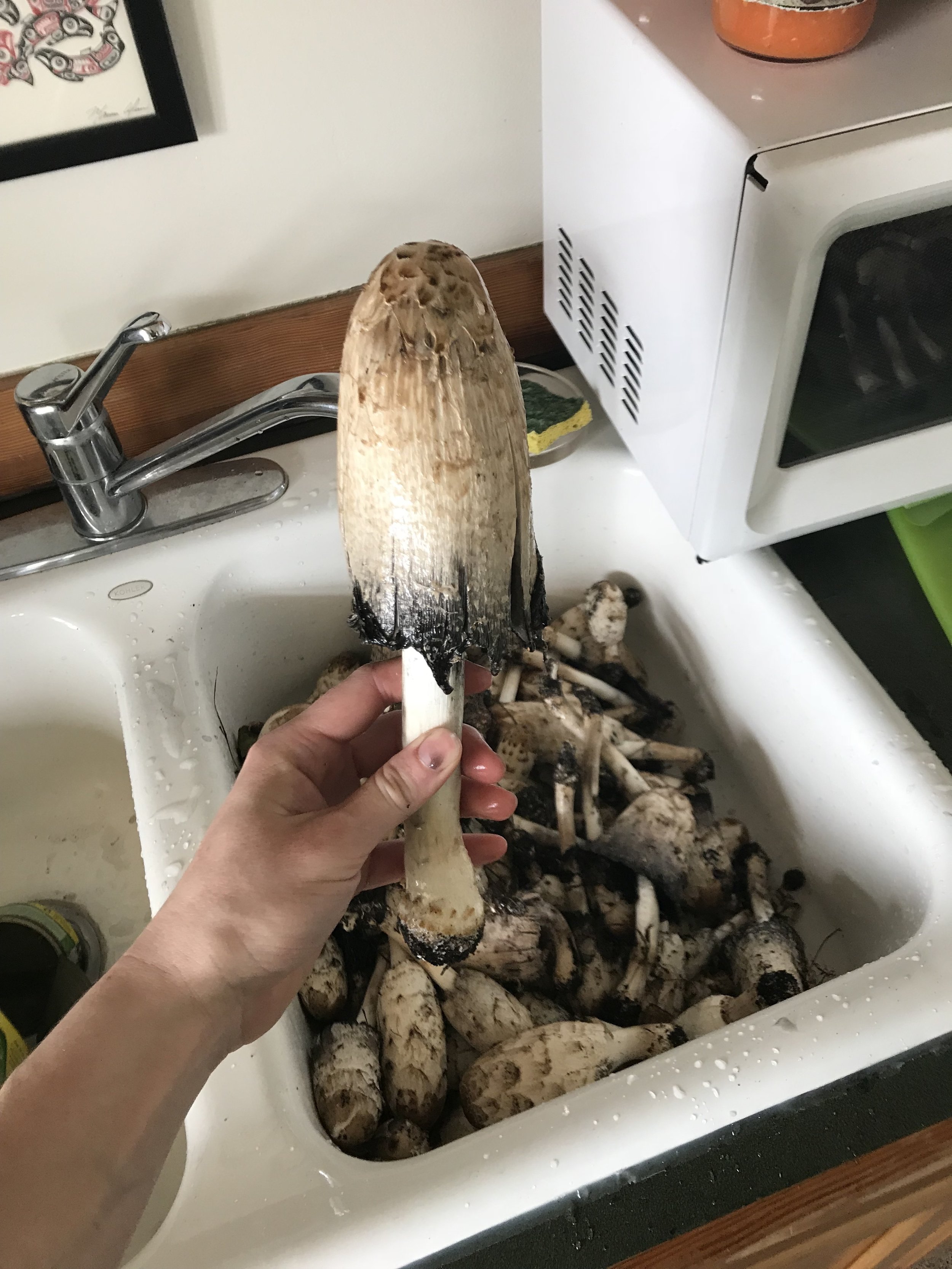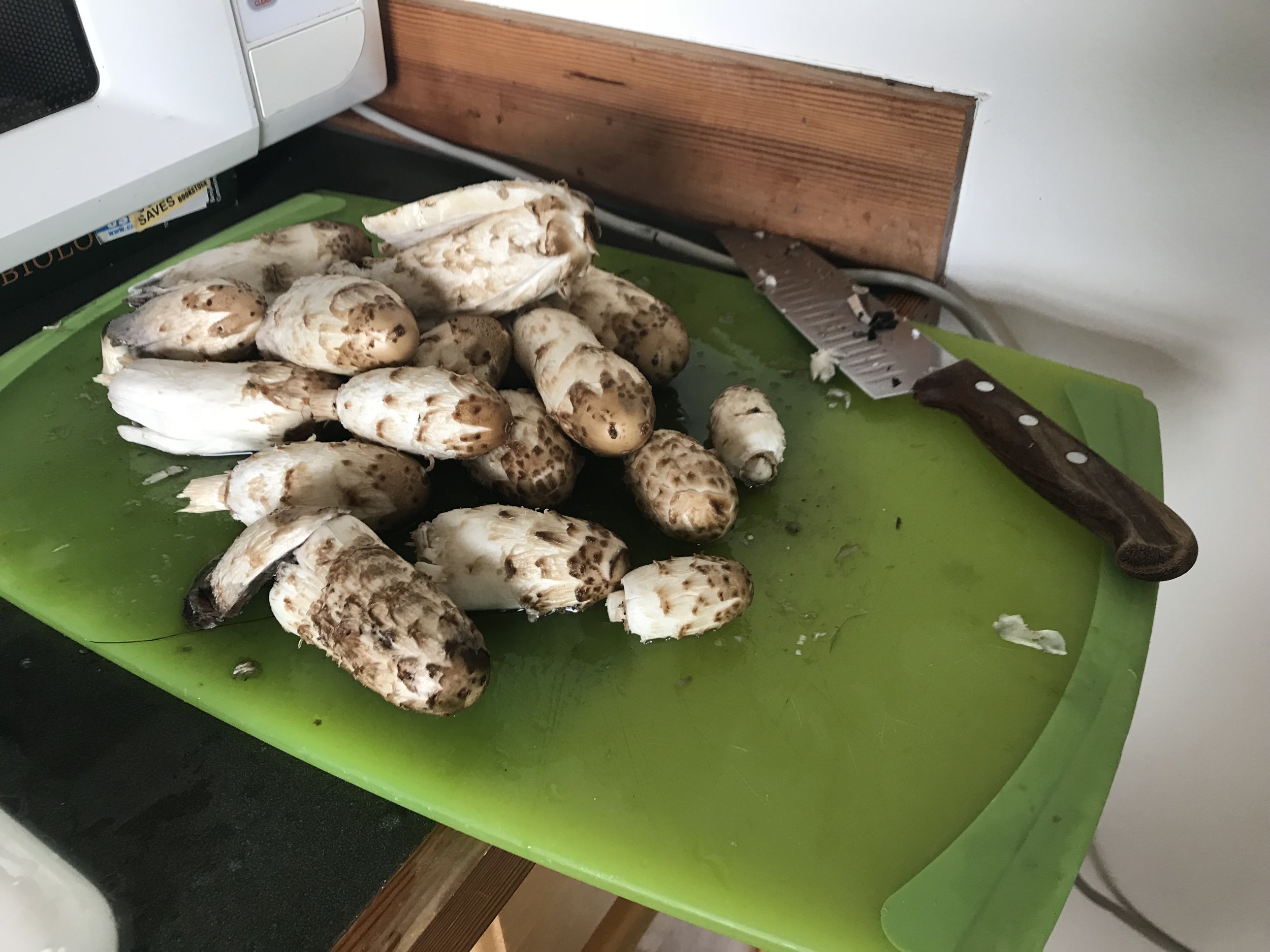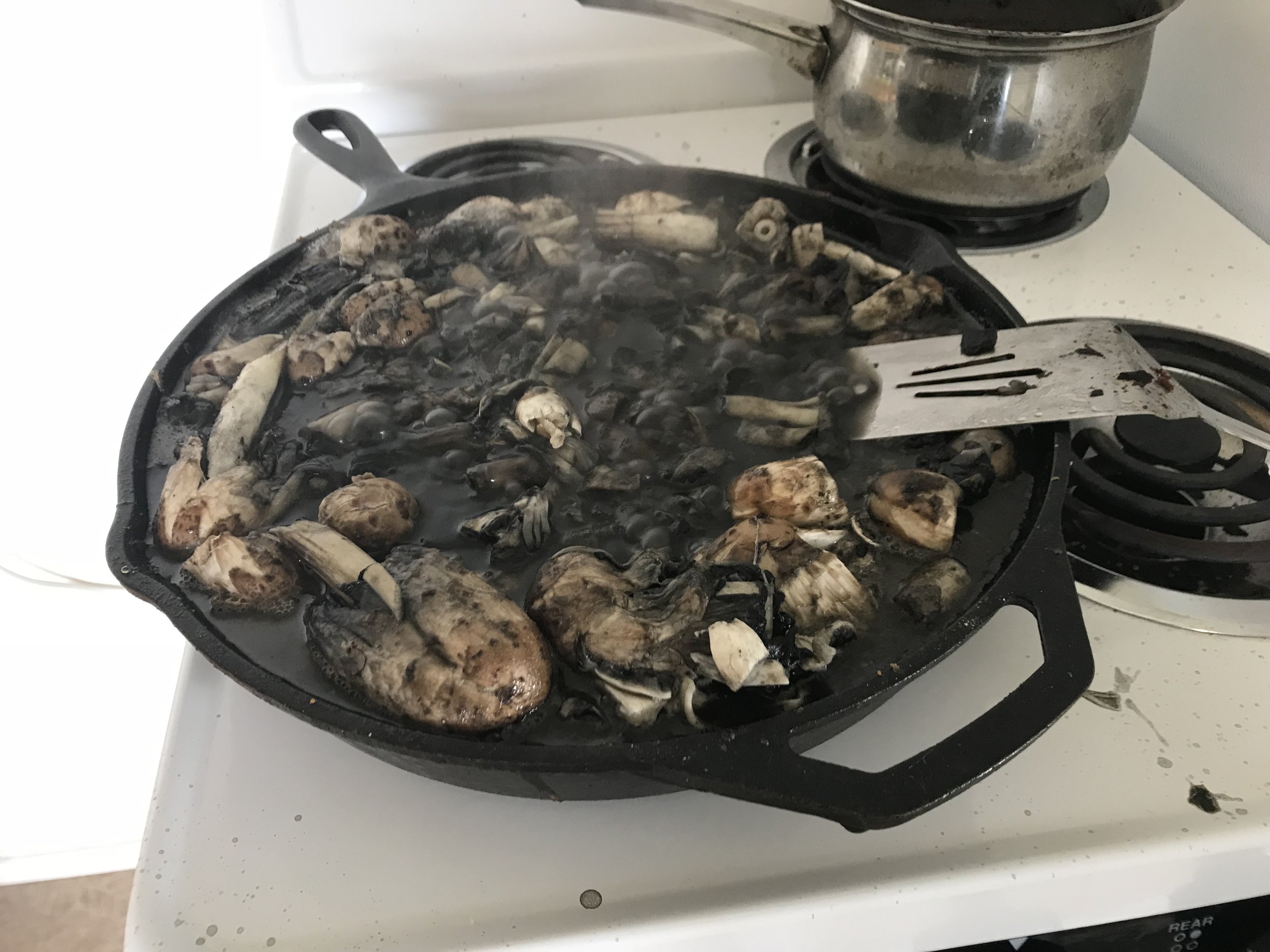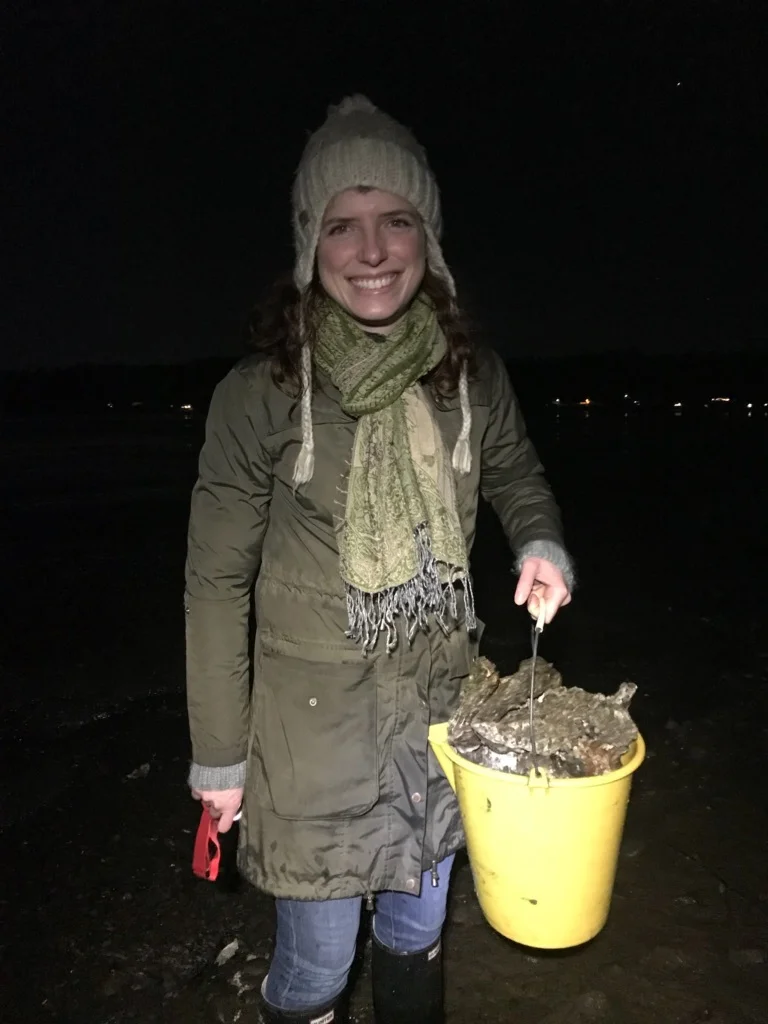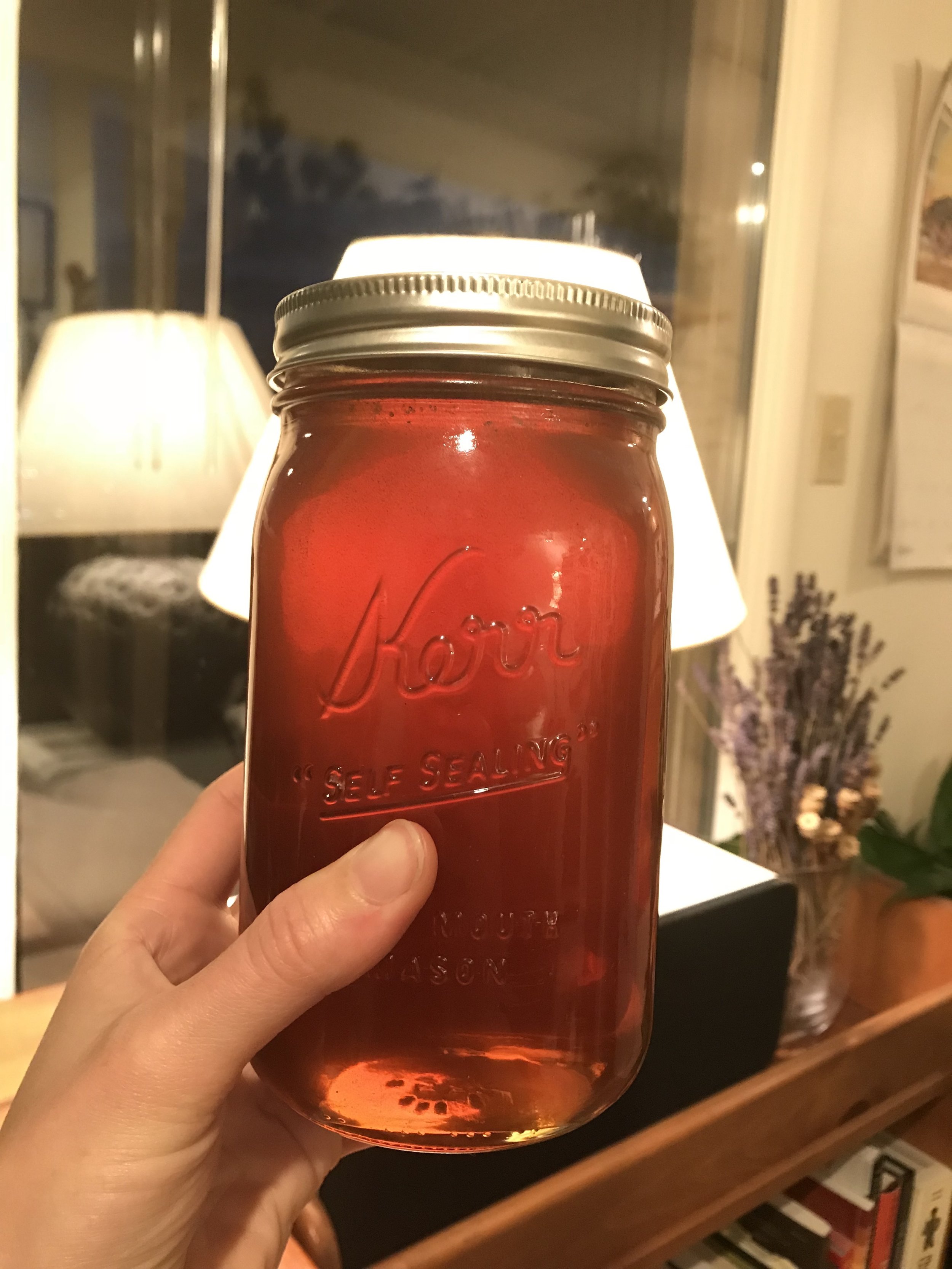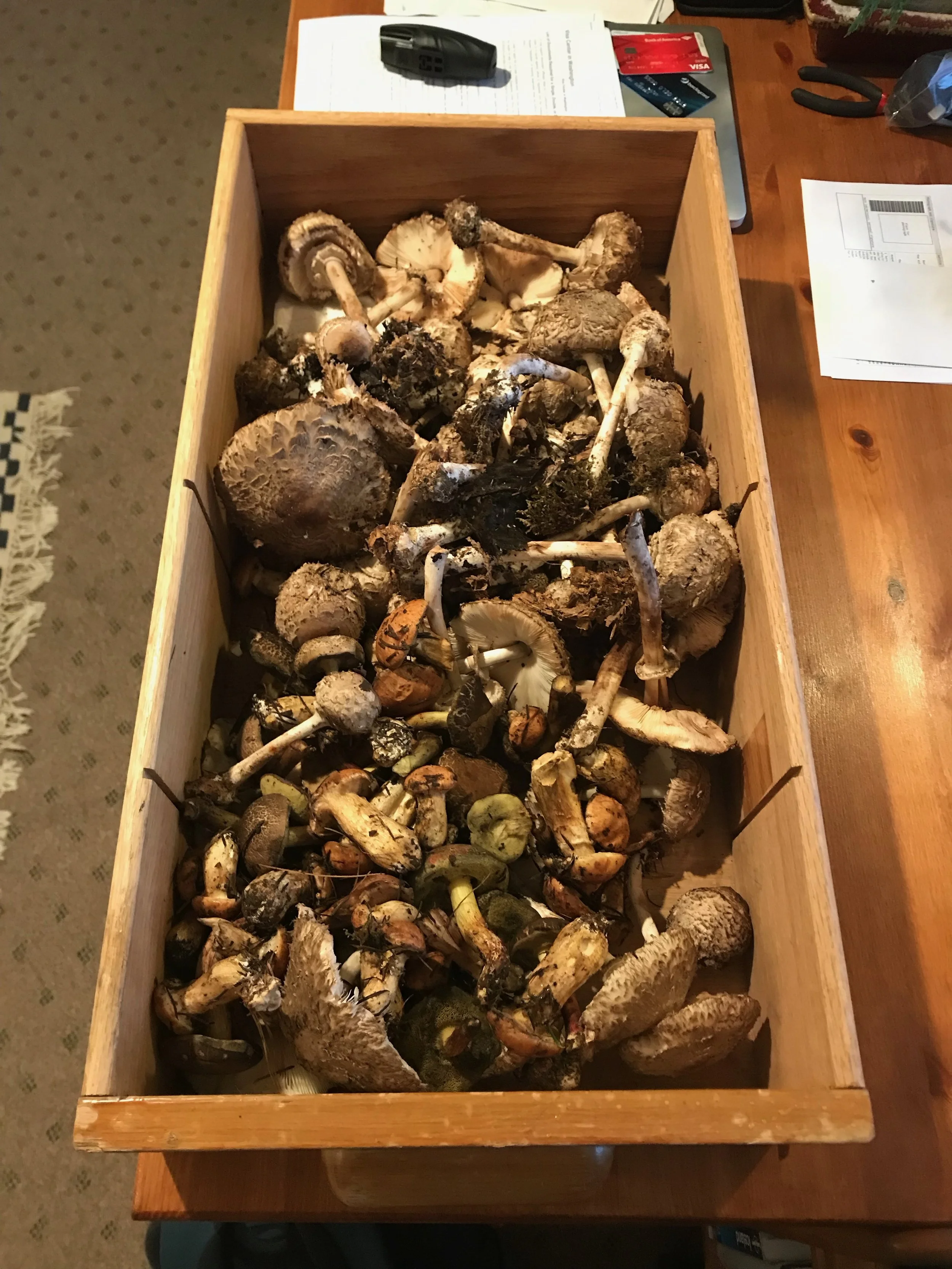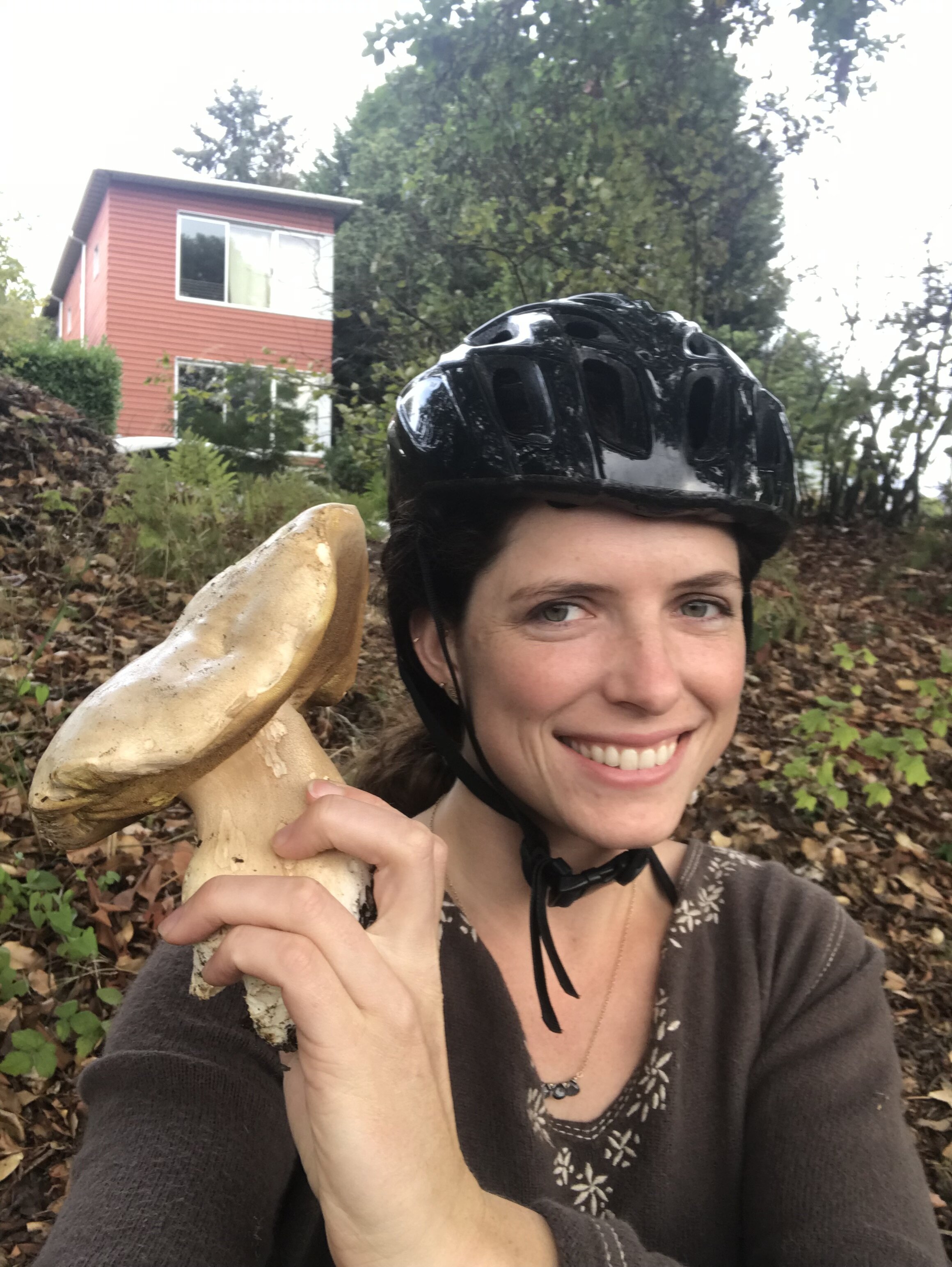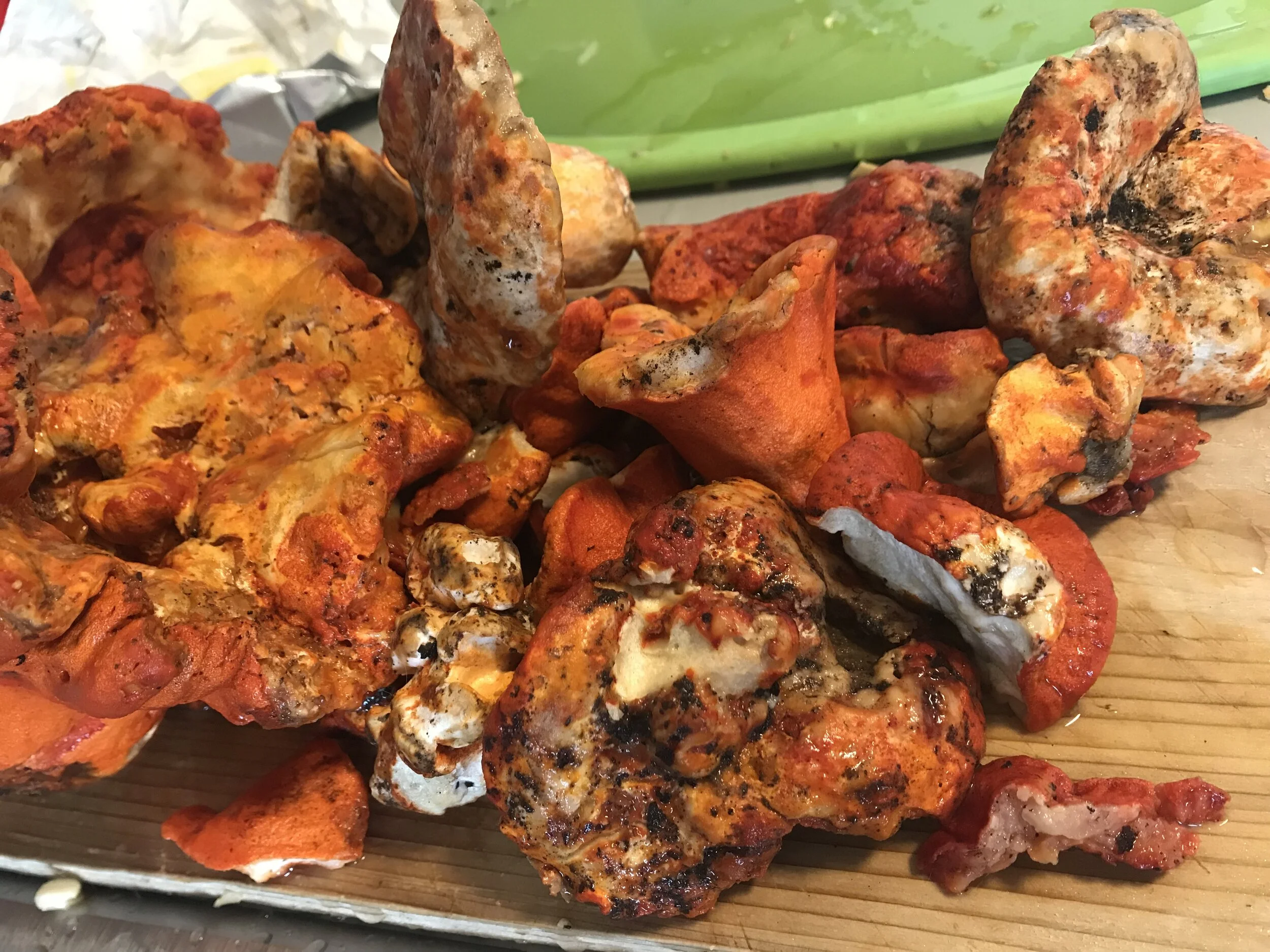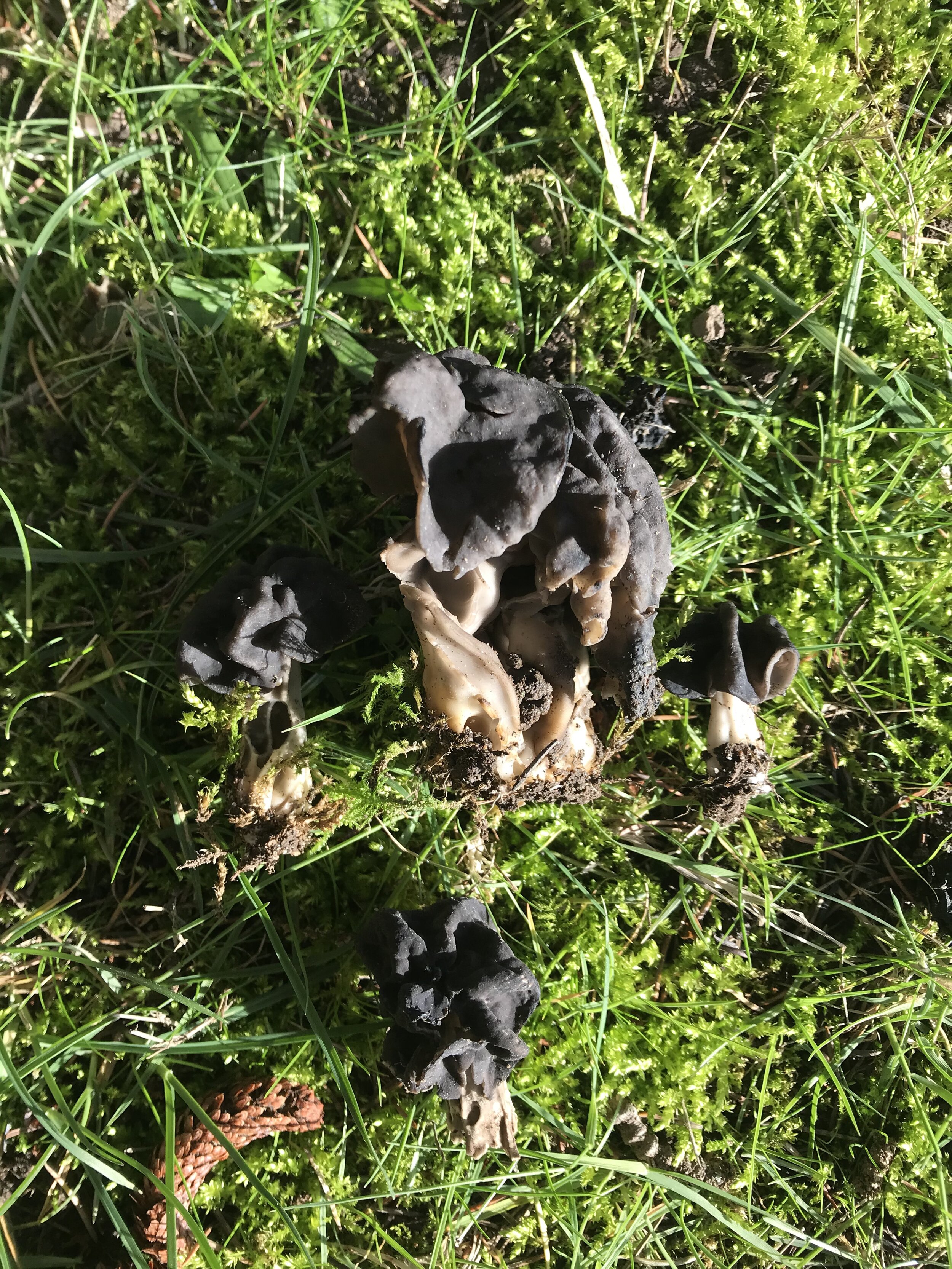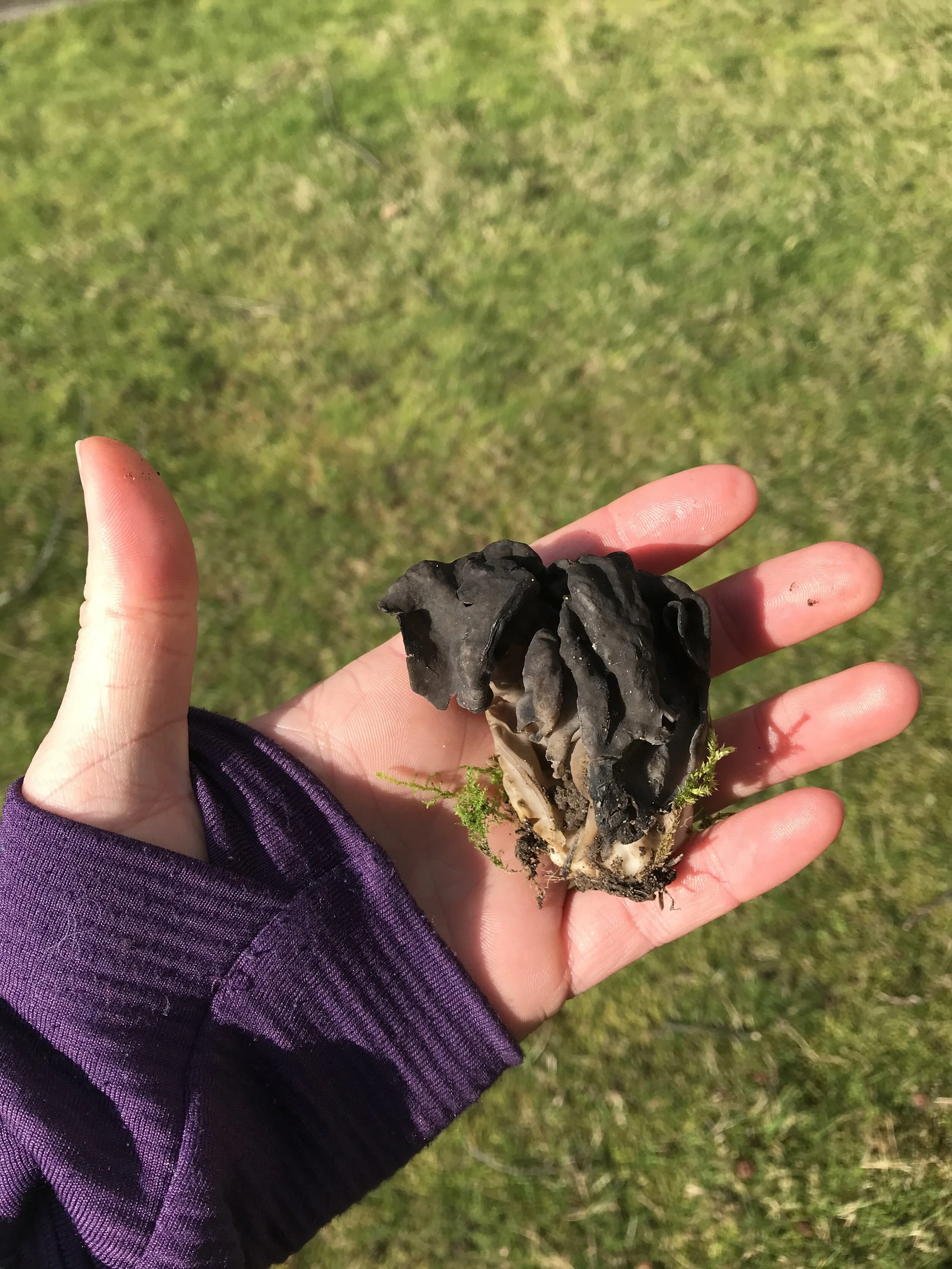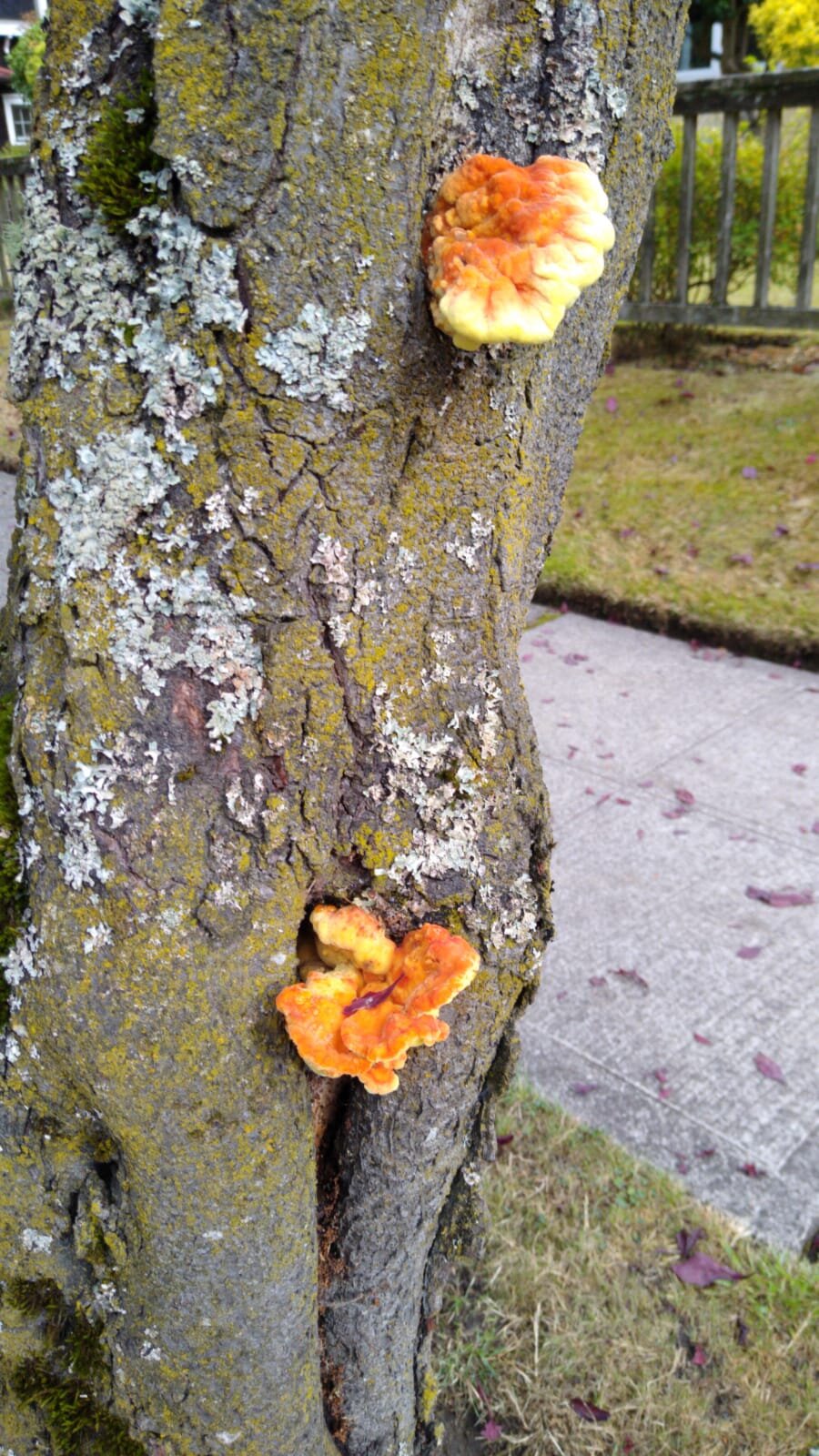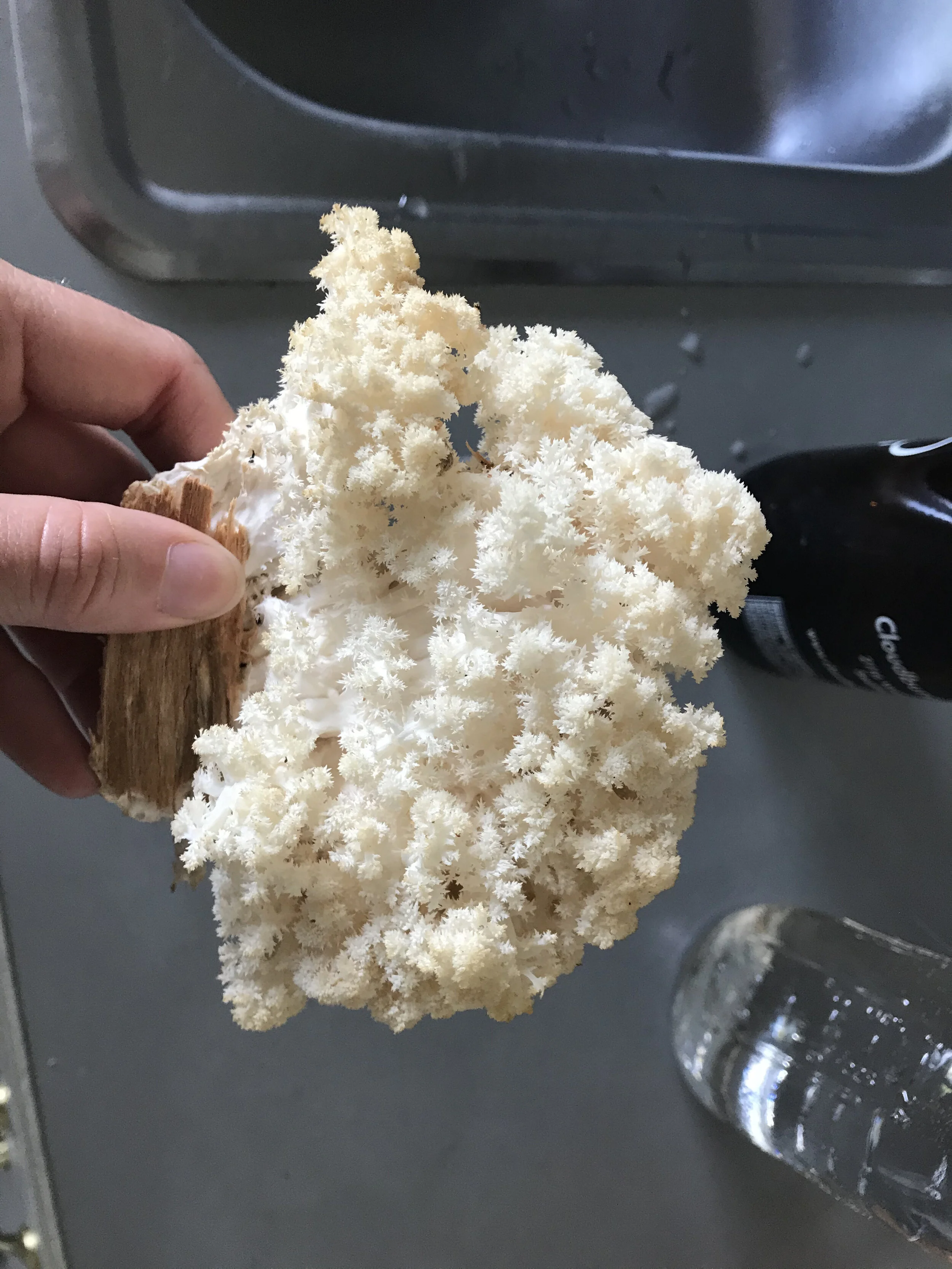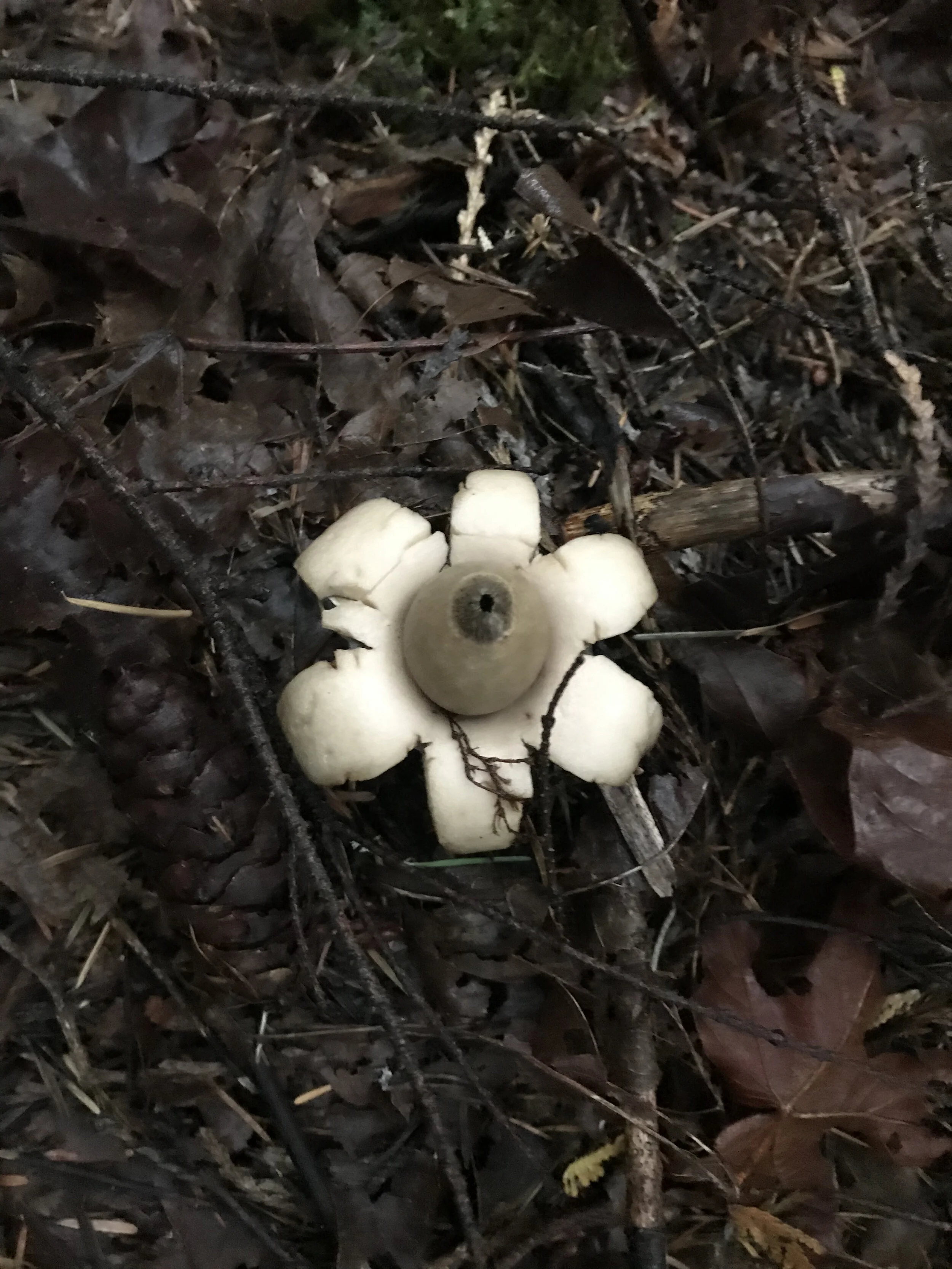Wild Foods and Finds of the Pacific Northwest
Since moving to Seattle in 2014, I have become quite passionate about foraging for native plants, fungus and natural products. Some of my favorite finds, edible and non-edible, are featured below.
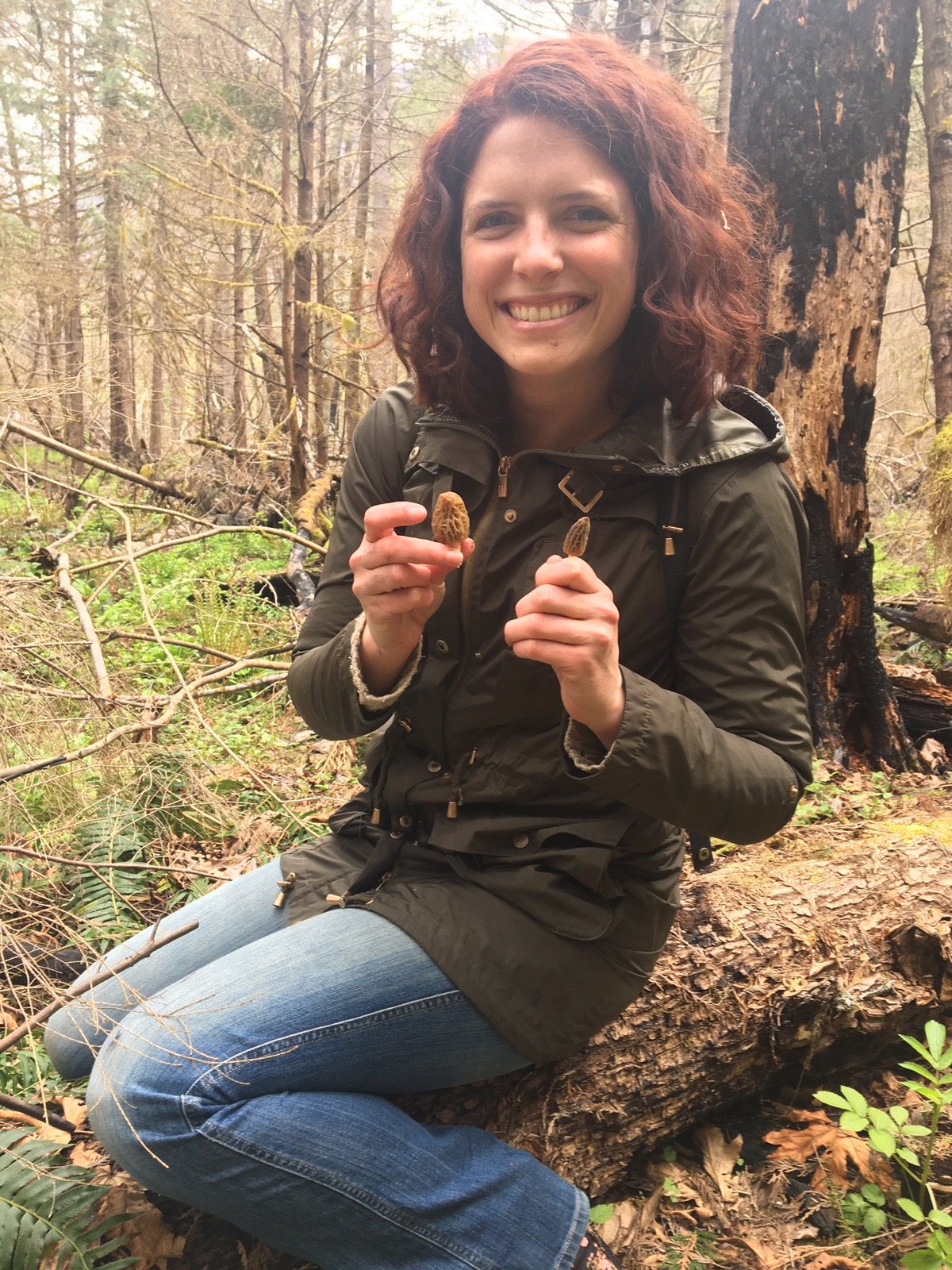
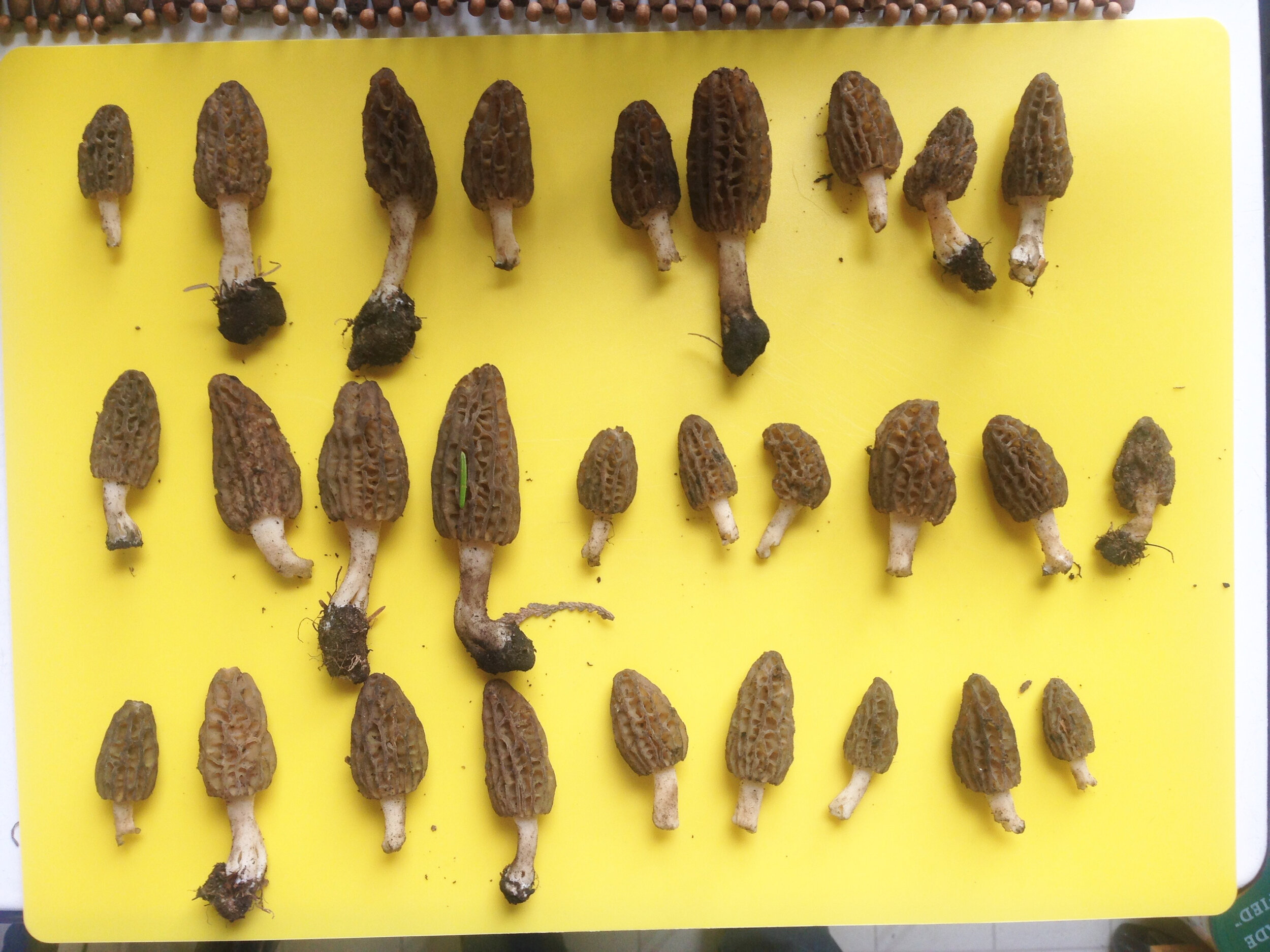

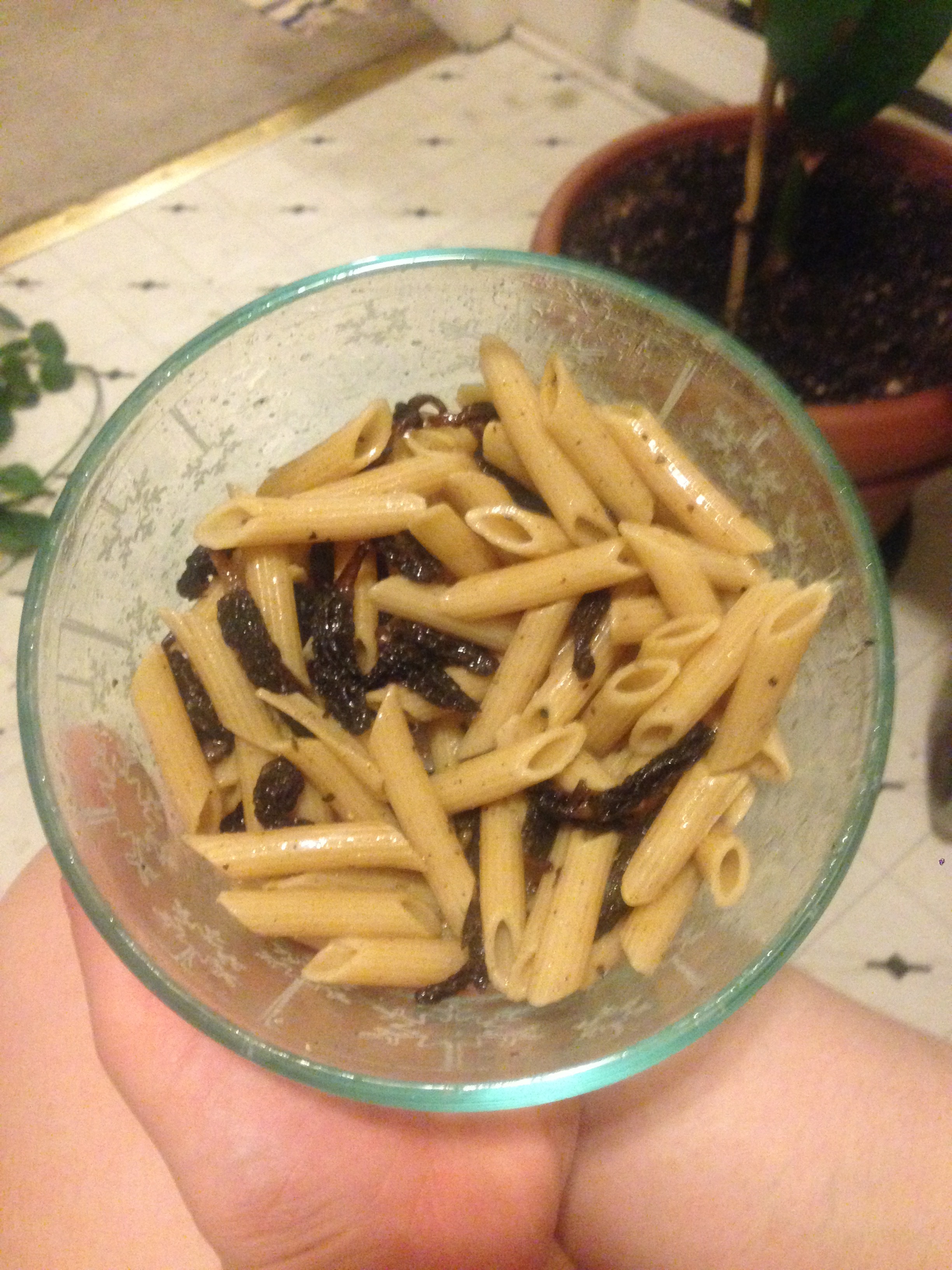

Beautiful baby morels in the North Cascades
False morels:
friend or foe?
On the left: a snowbank morel (Gyromitra gigas). After parboiling, it is an absolutely delicious mushroom
On the right: a lookalike, Gyromitra esculenta. Don’t eat them! They are highly poisonous and contain the same chemical found in jet fuel!
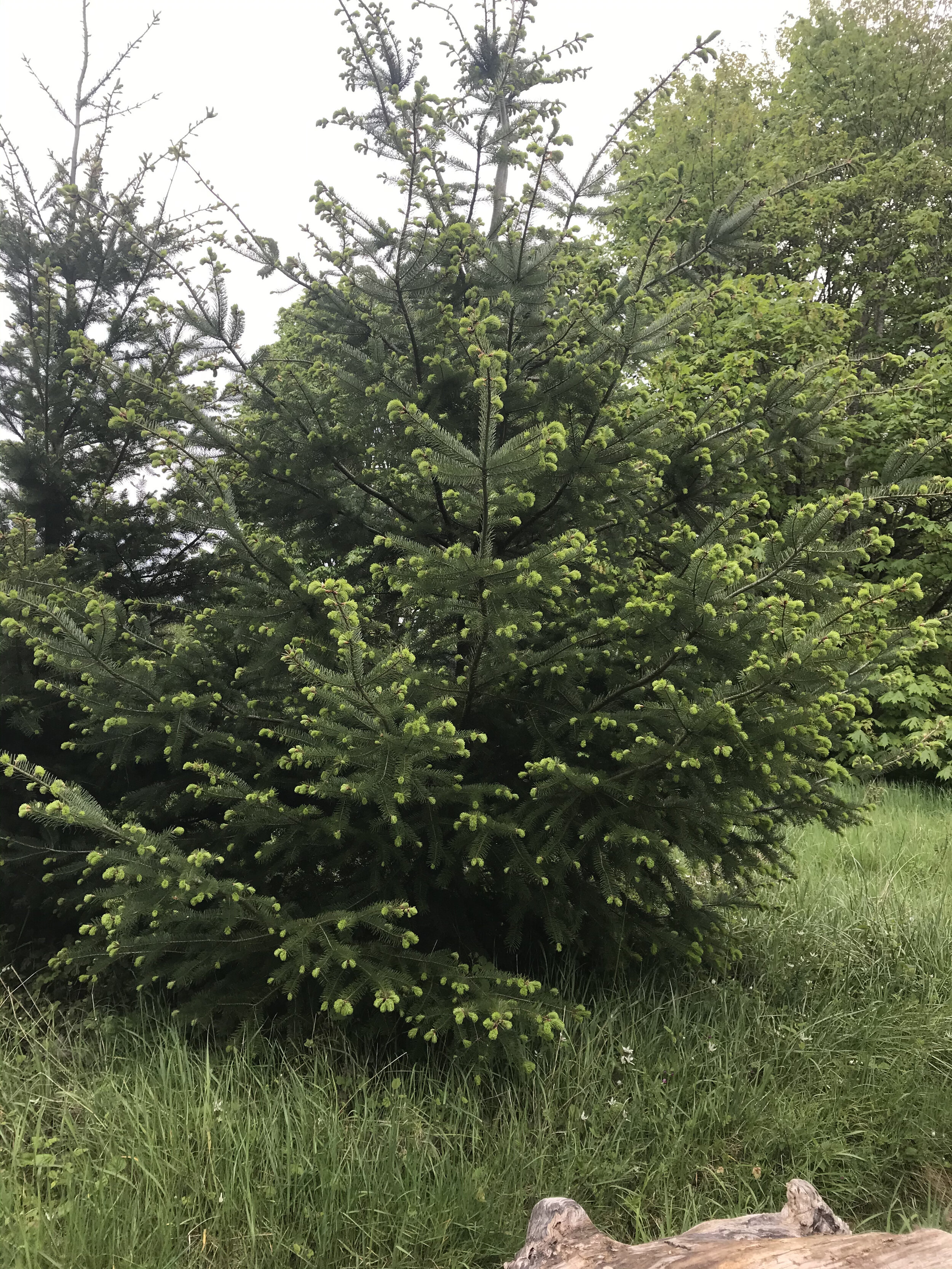
My first Ramaria finds! They really do look like coral (and they were quite tasty cooked with butter and garlic)
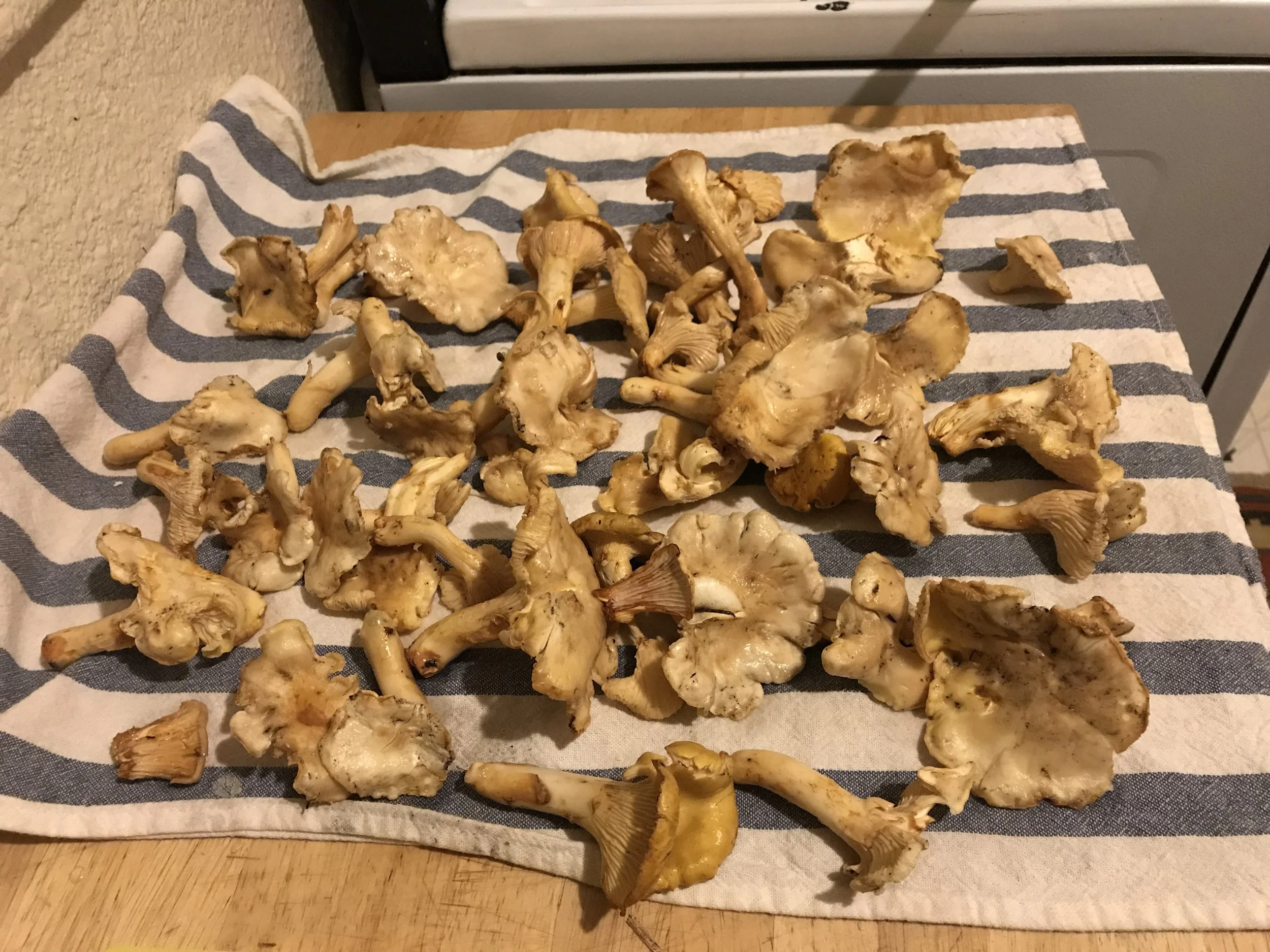
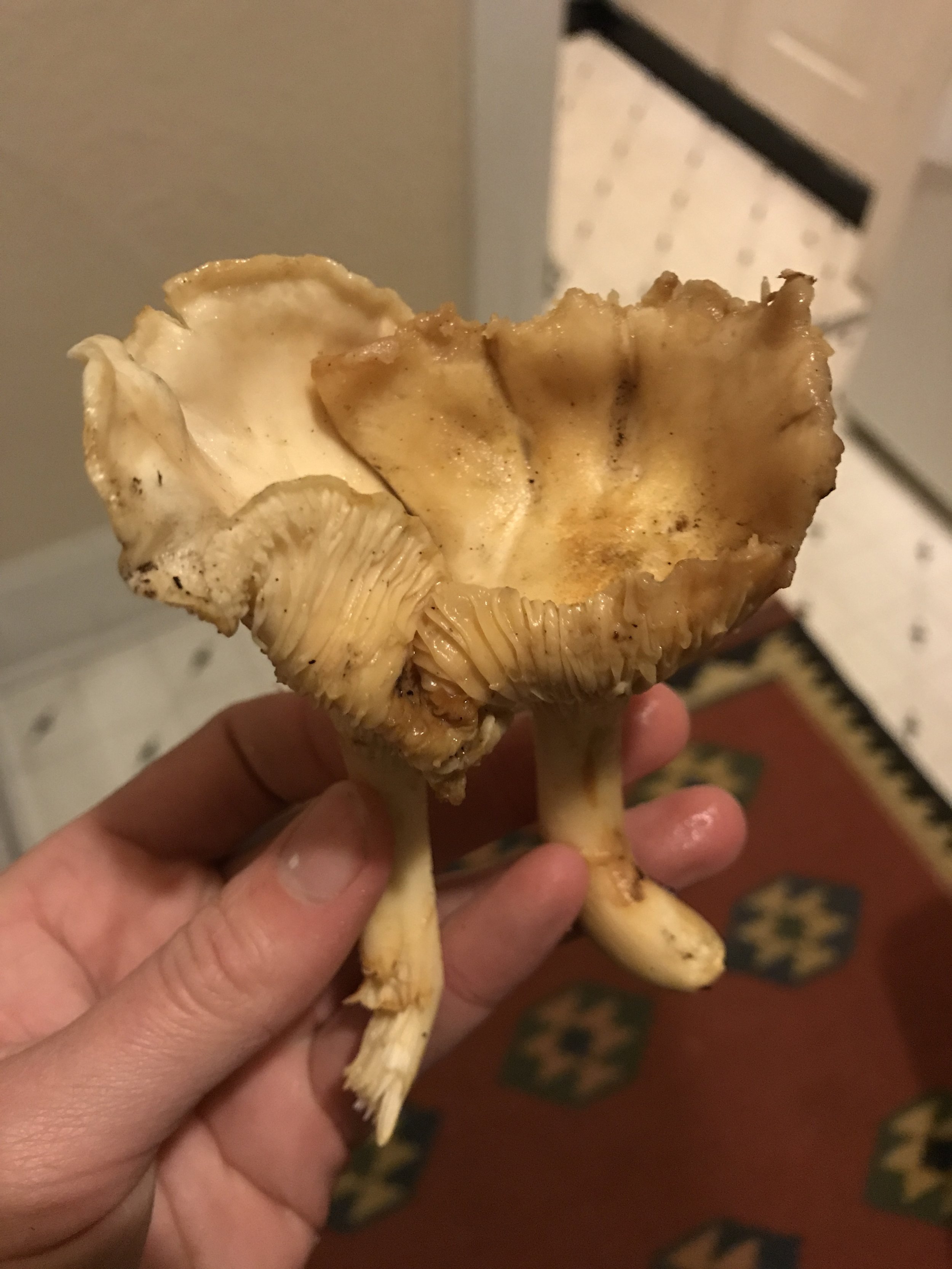
Chanterelles, of course. I believe these are white ones. Apparently their aroma isn't quite as fruity as the golden chanterelle.
Witches' Butter (Tremella mesenterica). It likes to grow in burn sites, so it's a good marker for potential morels. According to Wikipedia, "although considered bland and flavorless, the fungus is edible." I have not tried it.
To date, this is the largest amanita I've ever seen (featuring me for scale). It was the size of a dinner plate! Shame they're poisonous.
Some sort of Peziza -- aren't they cute? NOTE — these are not technically edible.
These black raspberries tasted like candy.
Grad school in Seattle means that sometimes your professors will take you salmon fishing...
...and you might get to try your hand at brining fresh roe. Thanks, Dr. Beavo!
An amanita "egg" emerging on Mailbox Peak. NOTE — not edible!
Shaggy Manes (Coprinus comatus) growing wild on the UW Medicine campus! You need to run home to cook them after foraging, or else they will auto-digest and melt into black goo.
Hood Canal oysters, gathered under the cover of darkness during winter low tide (with a shellfish permit, of course).
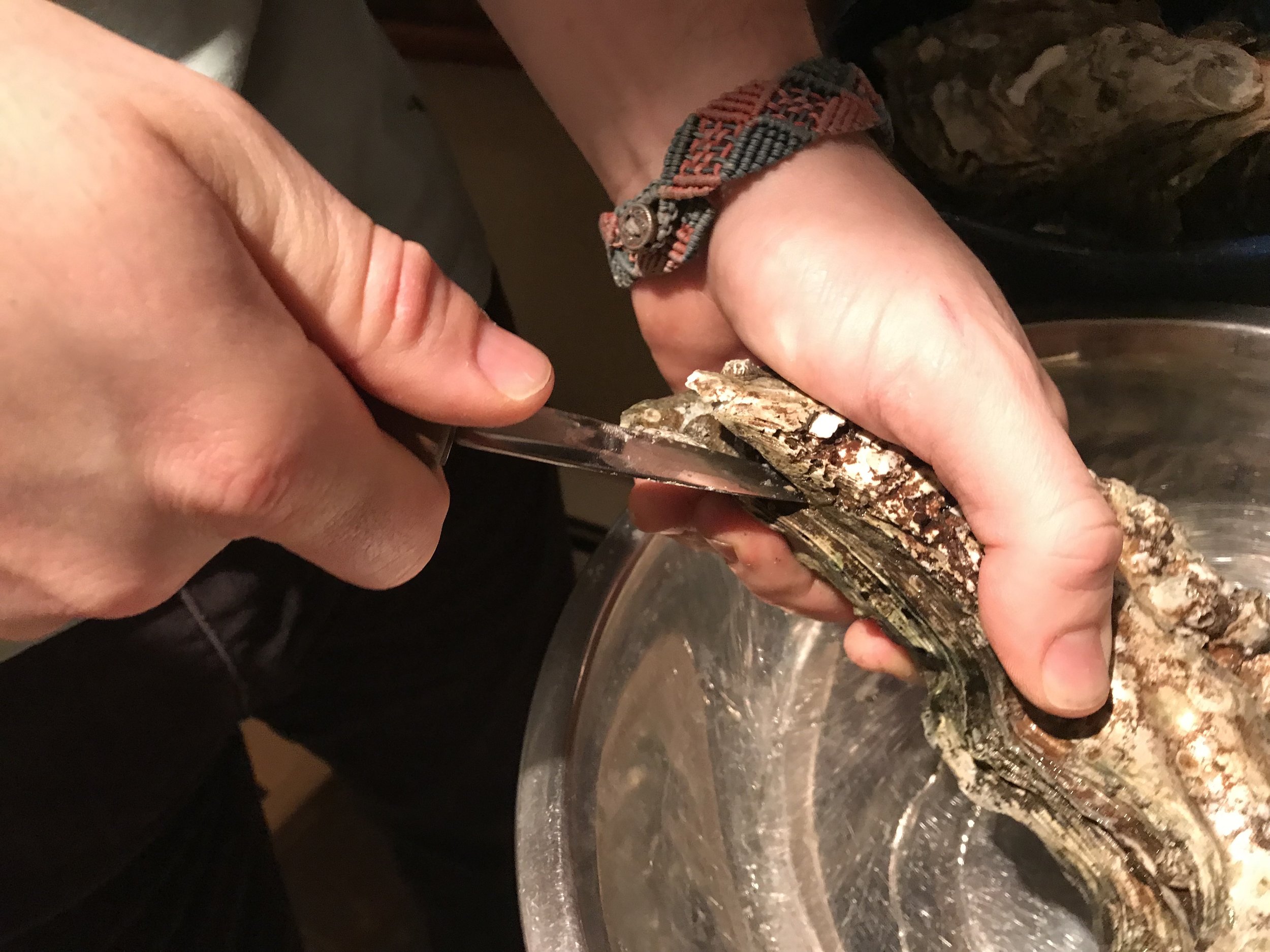
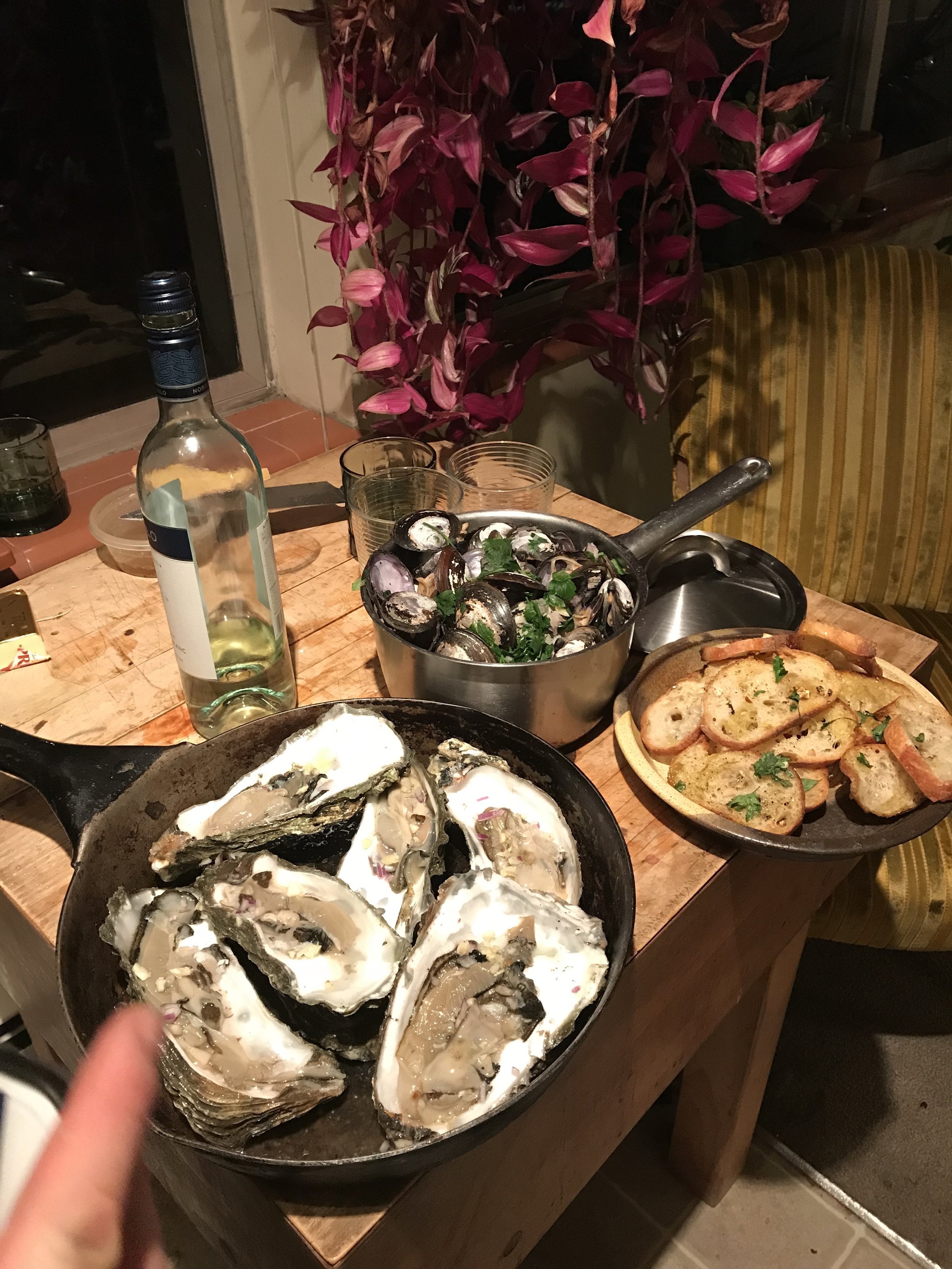
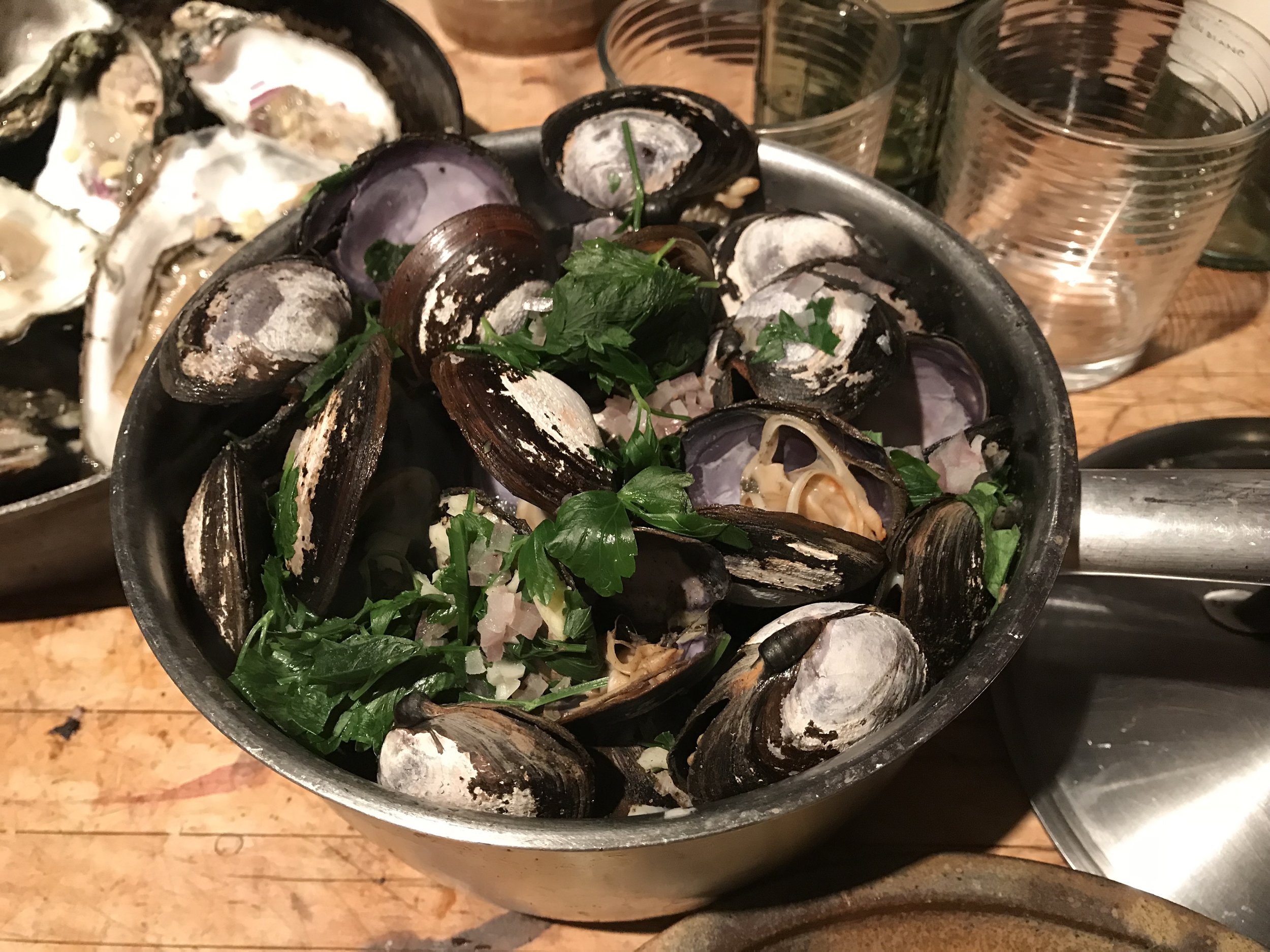
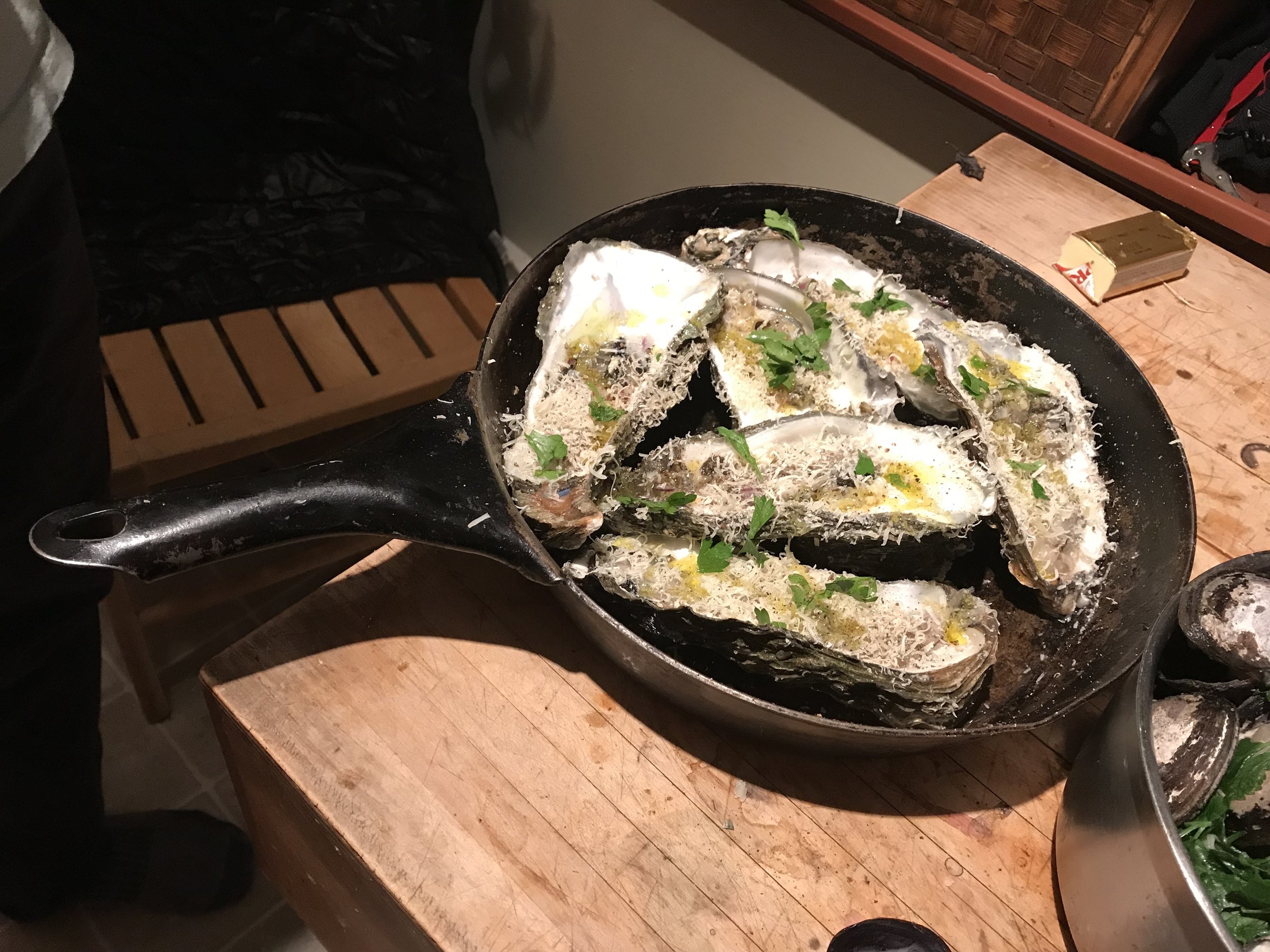
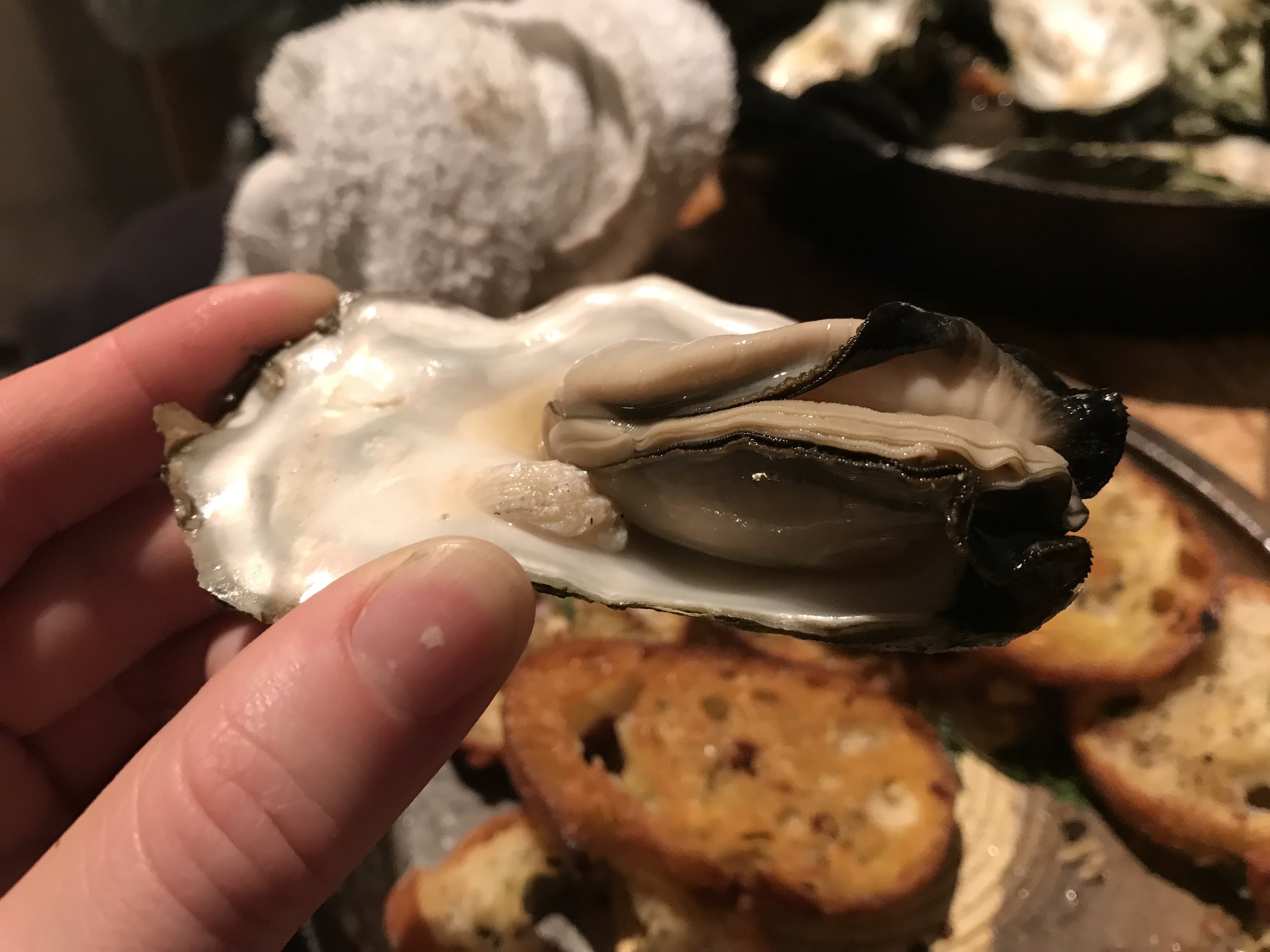
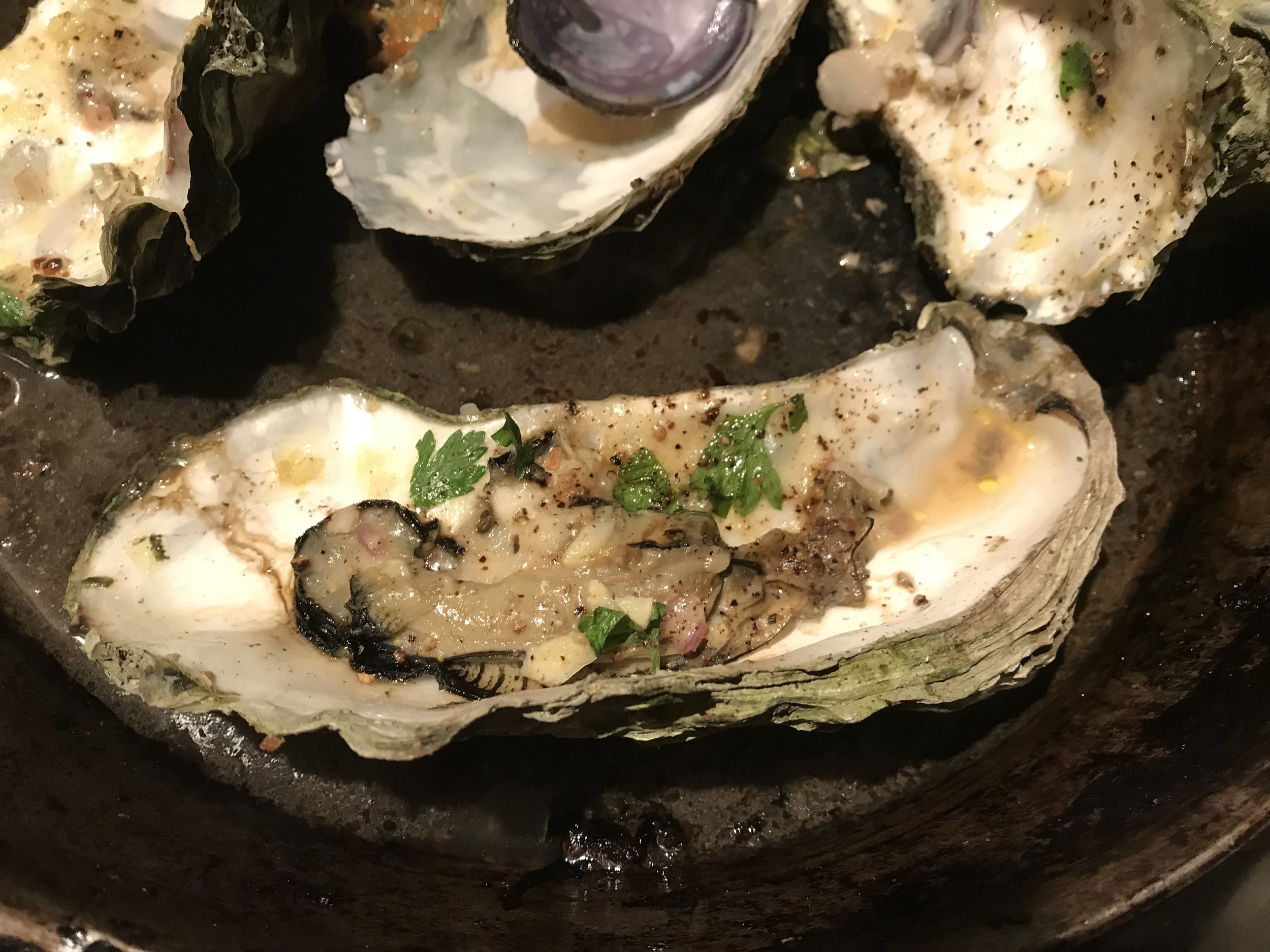
Some beautiful blackberry honey from a local beekeeper friend of a friend — I turned it into mead!
The first ferment of my first attempt at dandelion wine. I swore to my lab that we could drink it once we've submitted our first paper — and we did!
Some gorgeous birdsong in Discovery Park. Bonus: wild salmonberries!
While we were running at Discovery Park one day, my partner and I found an INCREDIBLE array of edible mushrooms! Needless to say, the running stopped, and was replaced by us frantically grabbing all of the shaggy parasols, slippery jacks, and red cracked boletes we could carry.
Cooking up some red cracked boletes (Xerocomellus chrysenteron) — one of my favorite mushrooms. Some people aren’t a fan of them because they do not have the firm, even flesh of king boletes or chanterelles, but I like their coloring and nutty flavor. They’re so flavorful that I think they’re best cooked in nothing more than butter and salt.
Slippery Jacks (Suillus luteus) sometimes get a bad rap because of their slimy caps, but once the thin, slimy outer layer is peeled off, they are great eating!
Some oyster mushrooms (Pleurotus ostreatus) growing wild in Discovery Park.
They had some beautiful rose pink accents after processing. My friend and I breaded and fried them and ate them as part of a really tasty summer salad.
Fall, 2019 was an especially impressive porcini season
Fall also brings lobster mushrooms. I cooked these with butter and thyme — delicious.
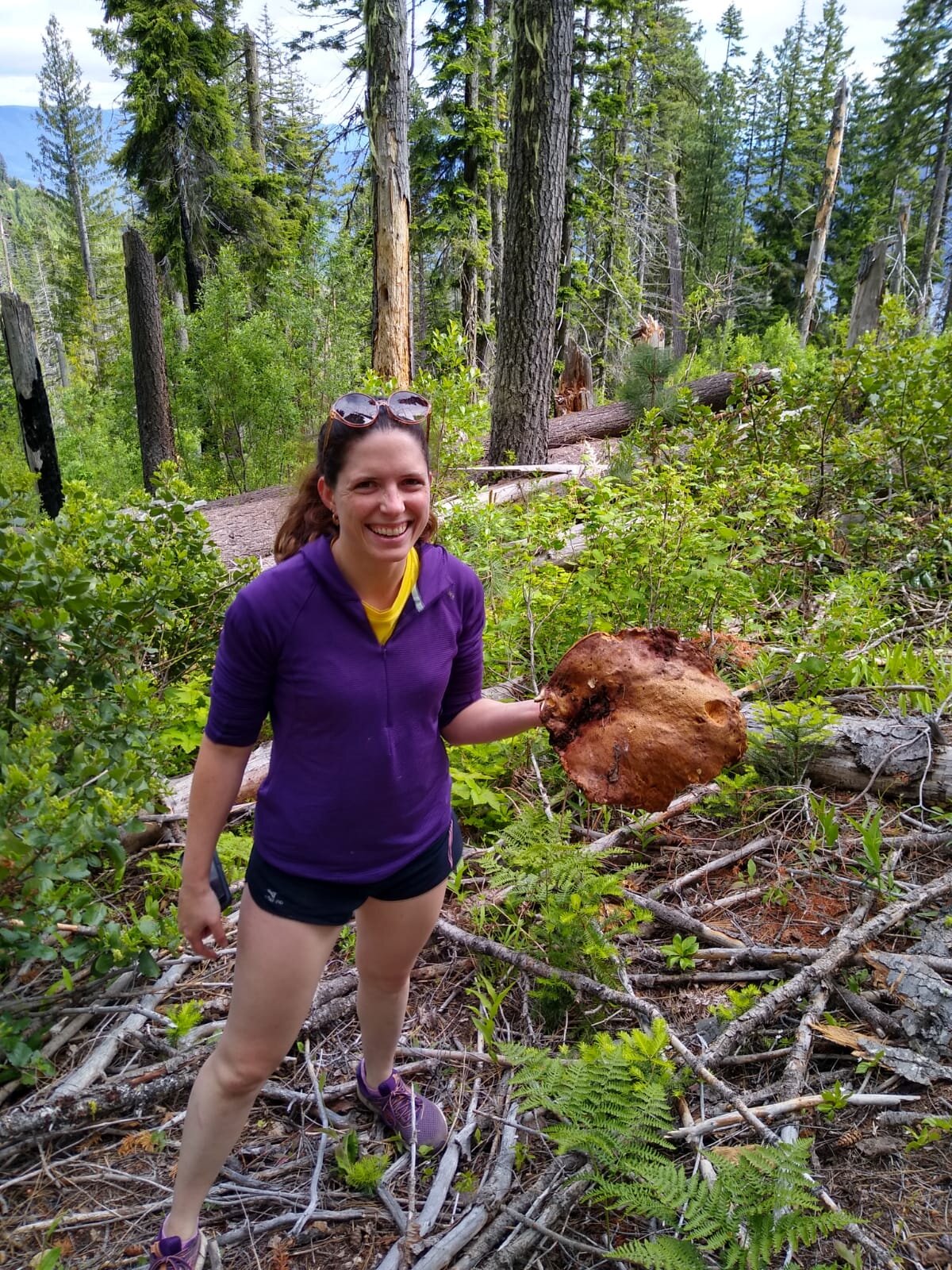
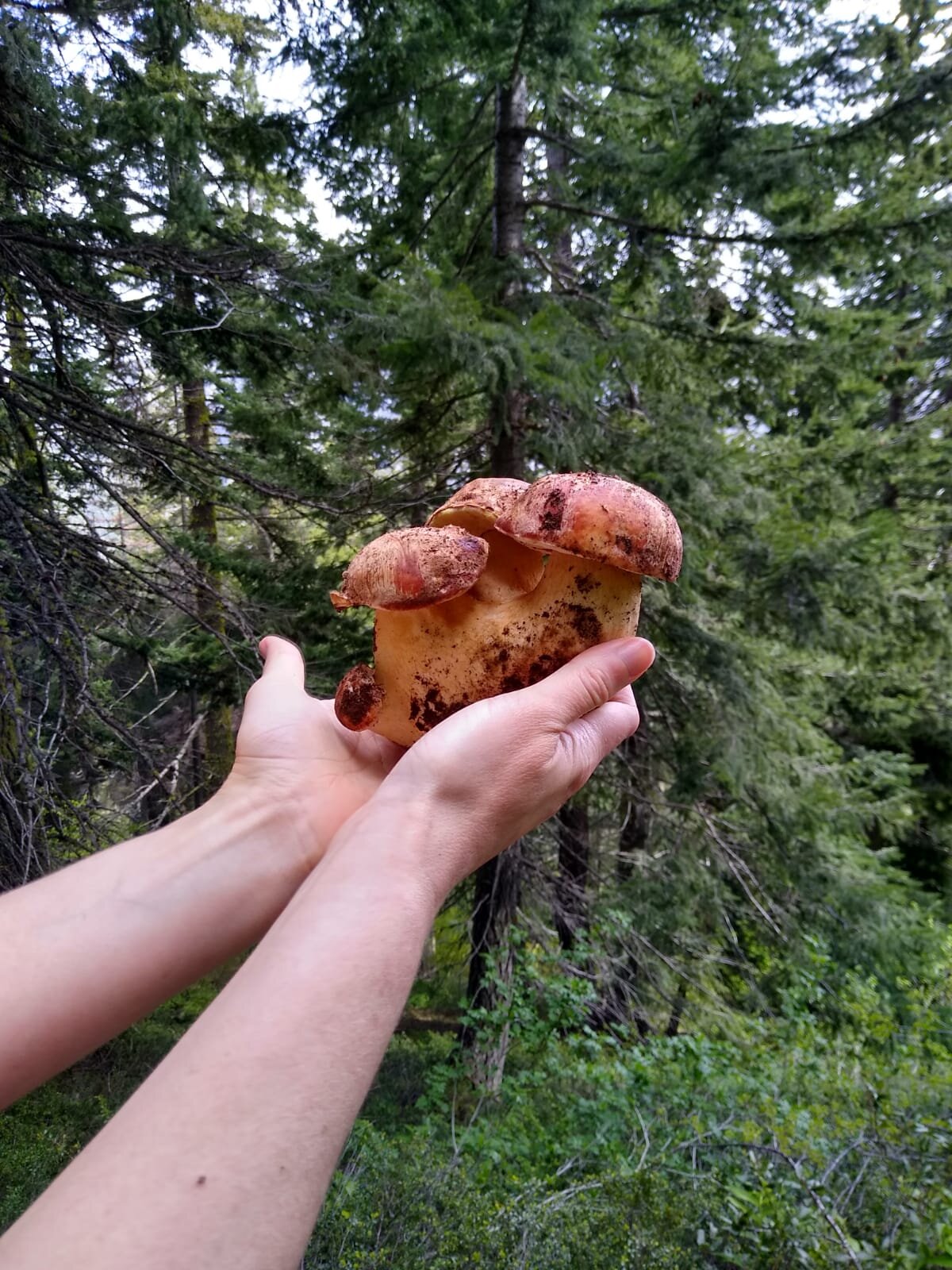
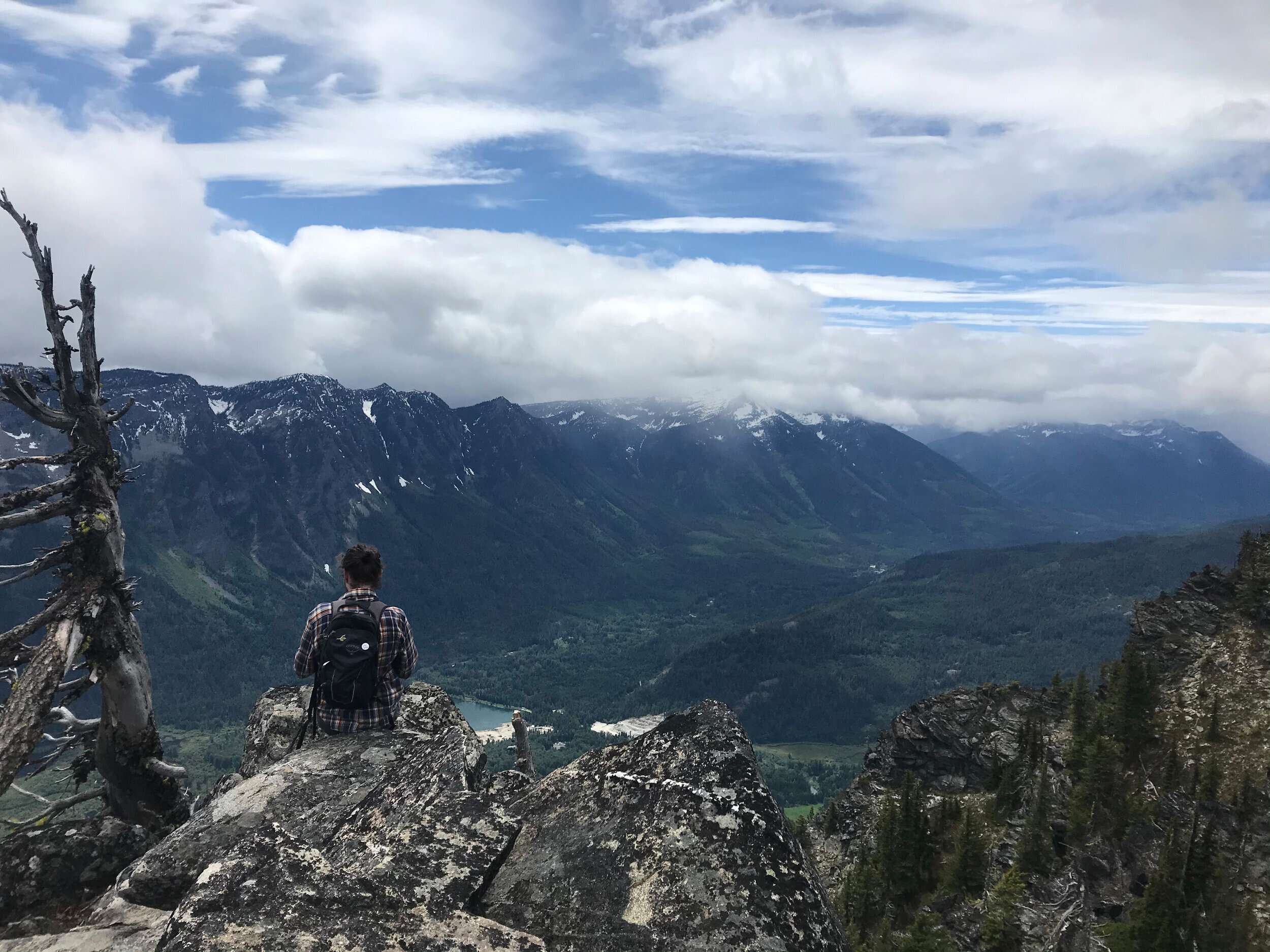
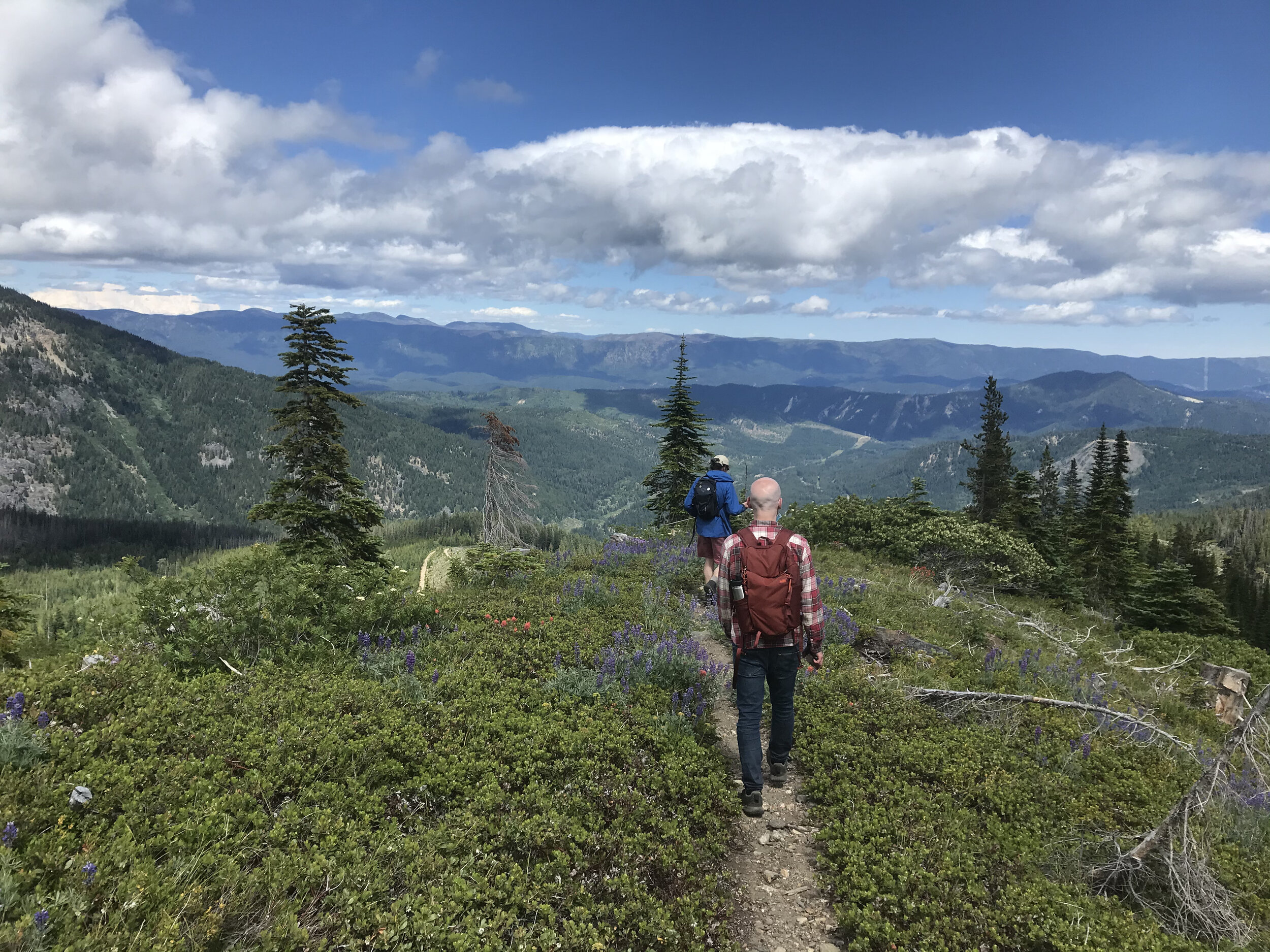
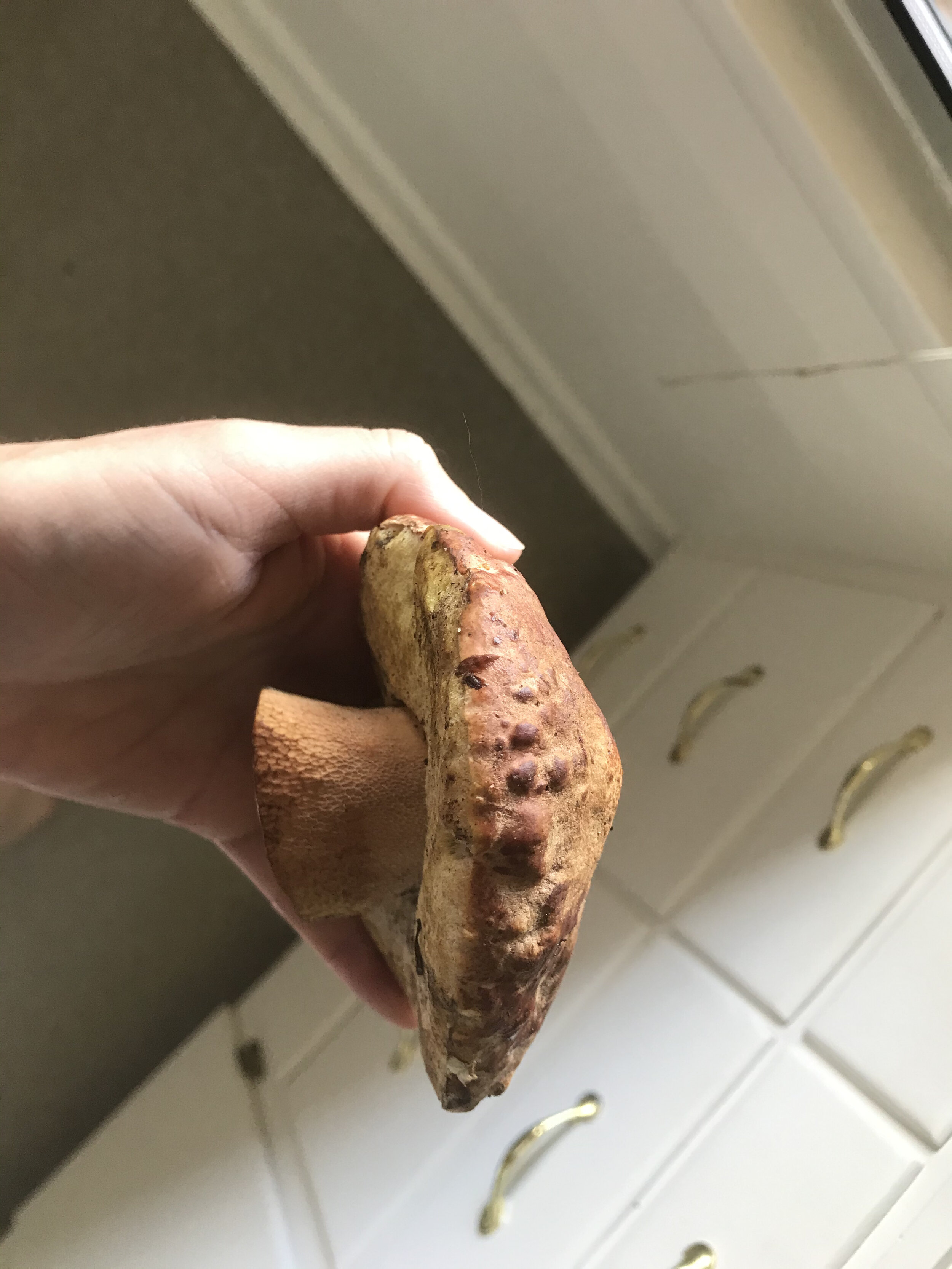
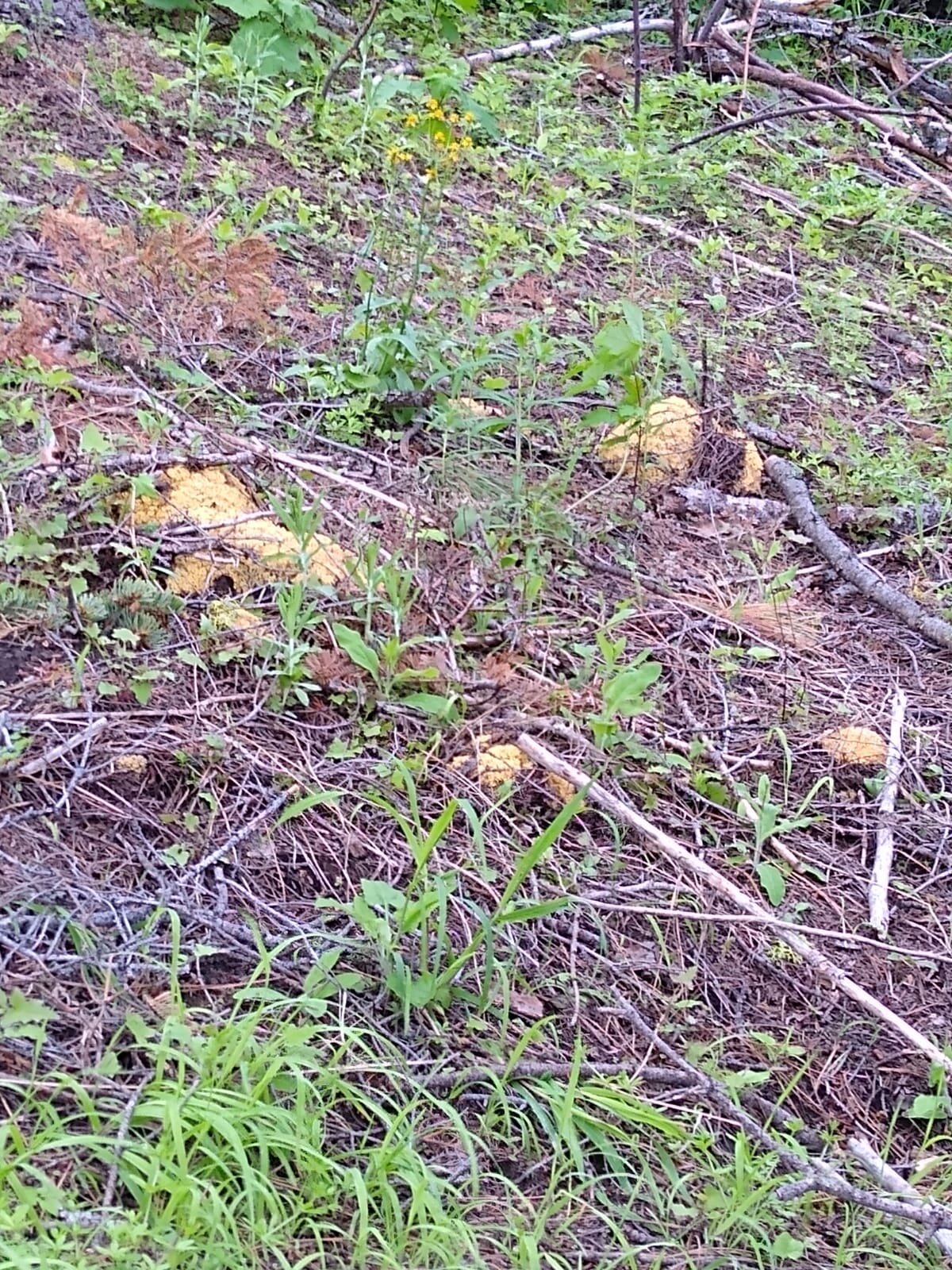
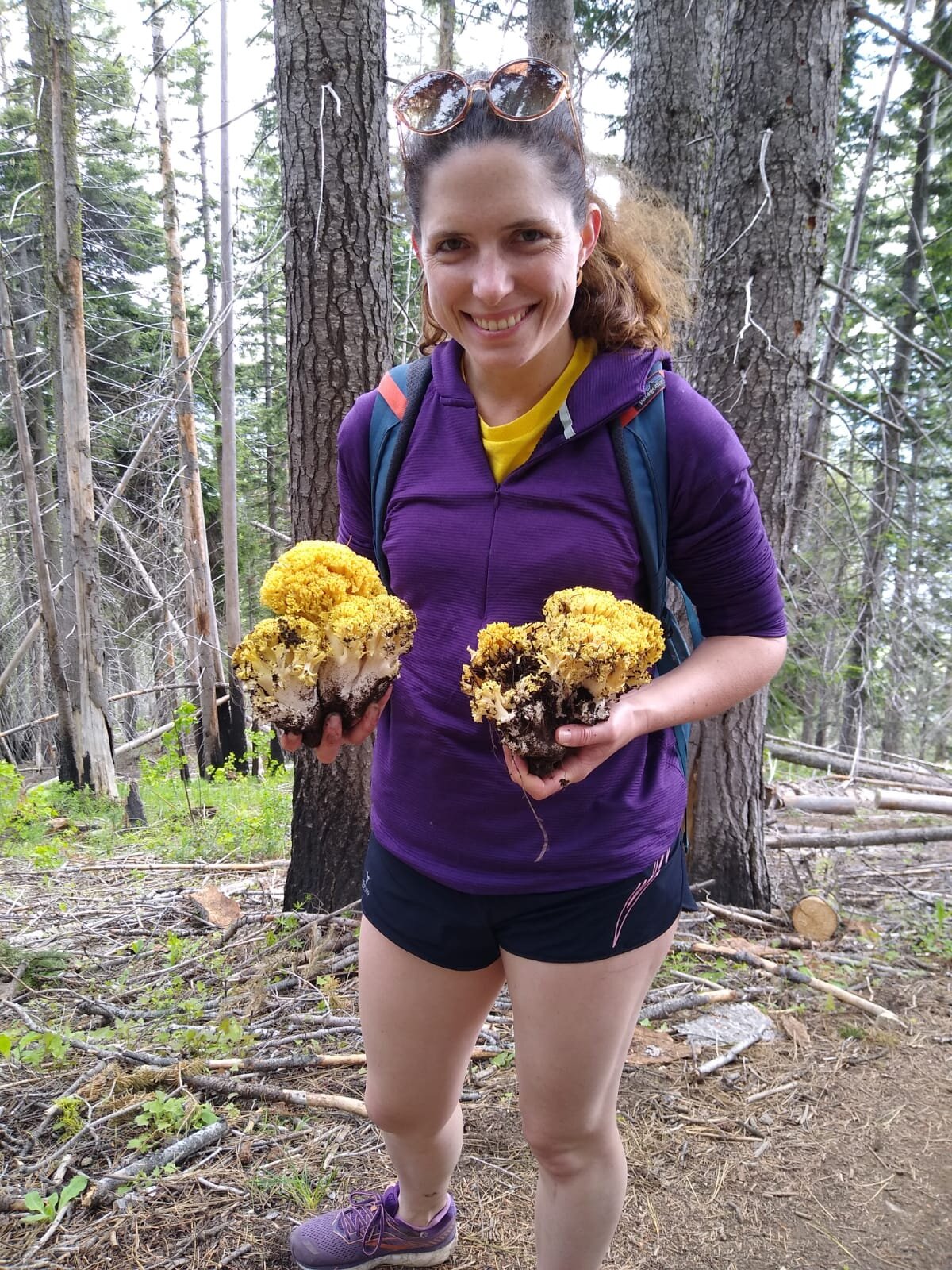
Panoramic views, with lots of lovely spring king boletes along the way!
Mid February 2020 and I found my first Helvellas of the season! Commonly known as elfin saddle, these bizarre looking mushrooms are often found the vicinity of true morels later in the year…
NOTE — these are NOT edible.
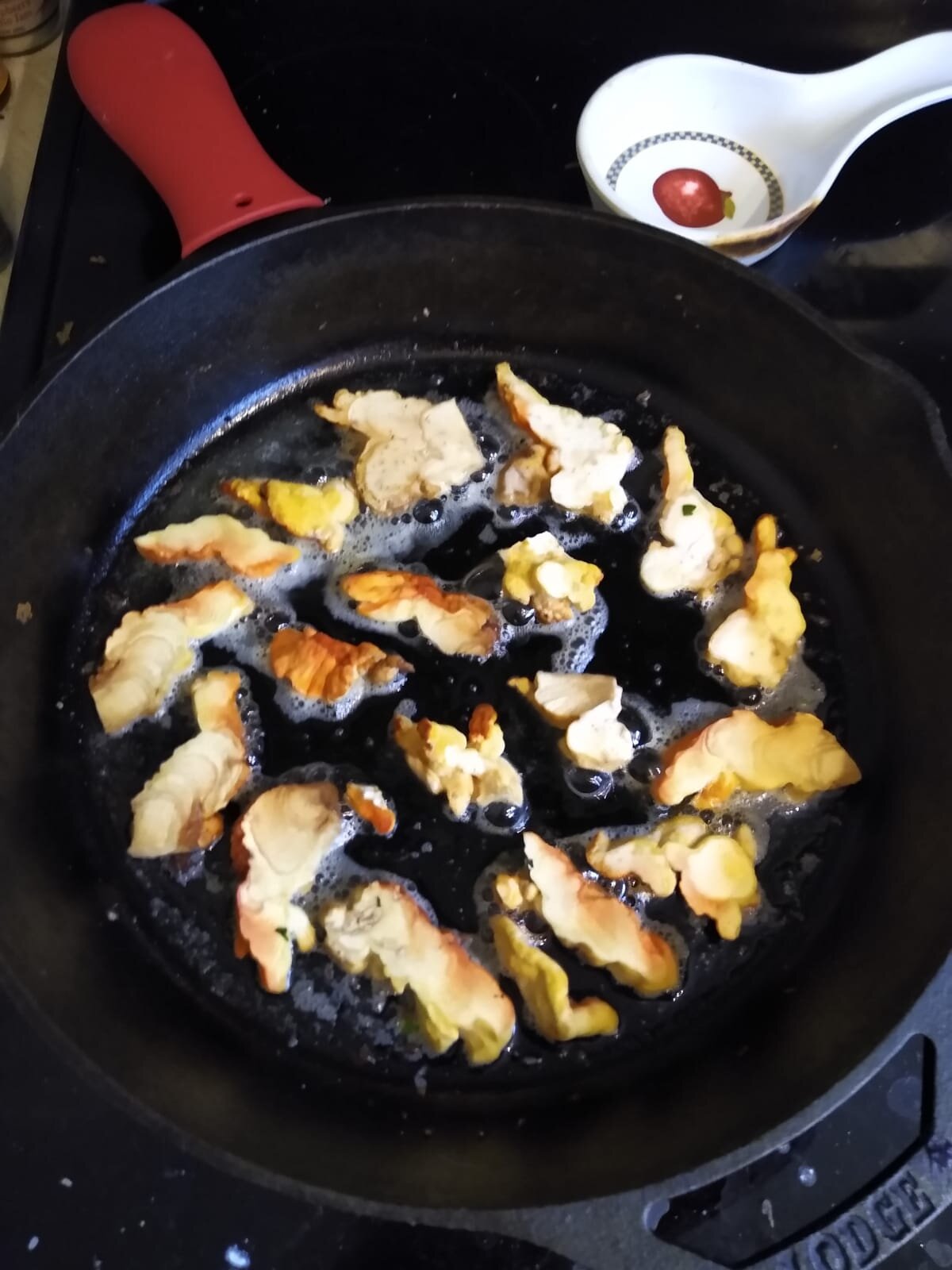
I was thrilled to find some Bear’s Head fungus for myself. It’s highly distinctive and very beautiful. It has a flavor somewhat like seafood or shrimp. It is a tooth fungus that likes to grow on rotting logs (“tooth fungus” also explains its wild shape).
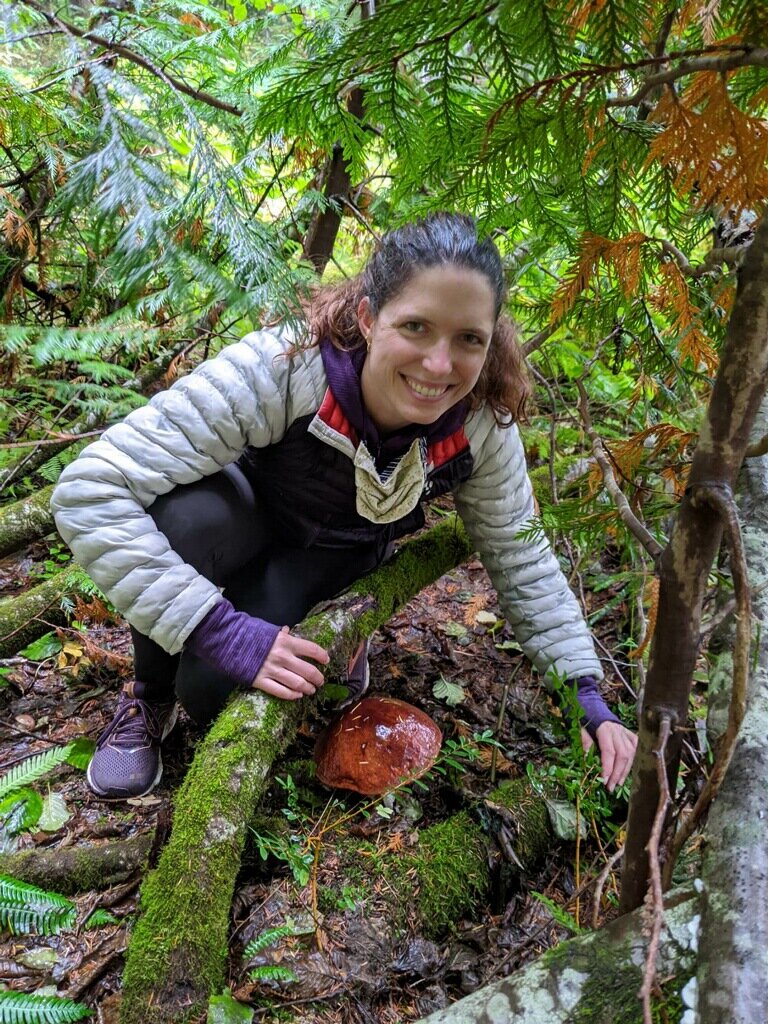
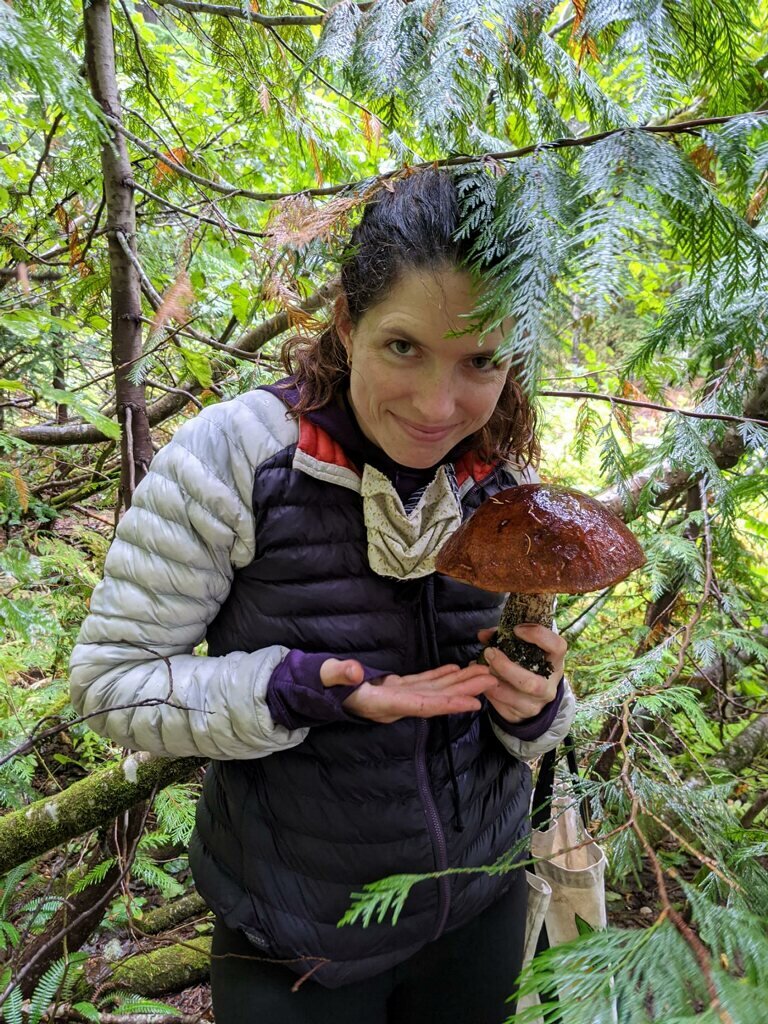
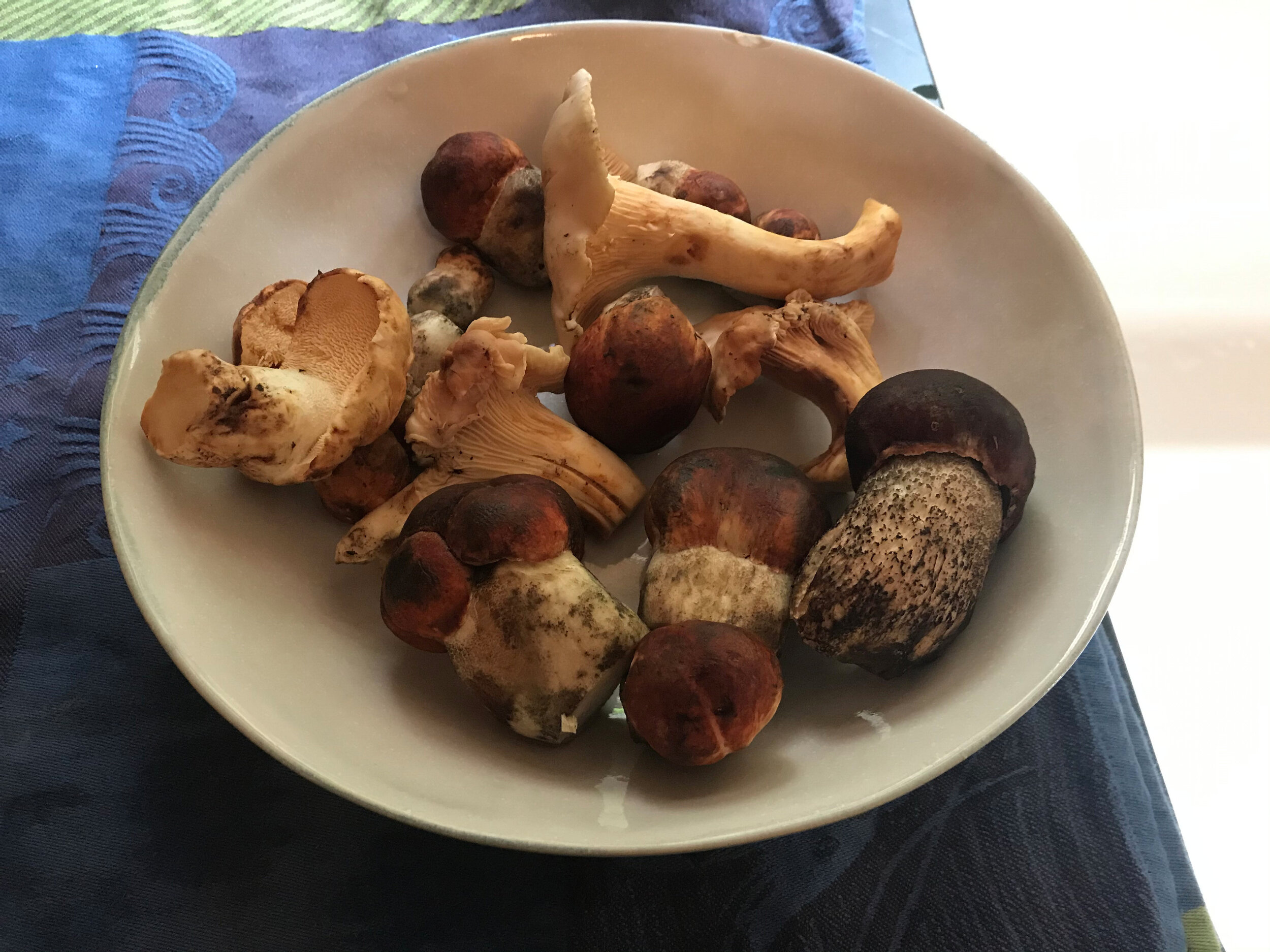
This video was taken on the same day that we found pounds and pounds of spring corals
Geastrum saccatum
Check out this earthstar I found in Discovery Park!


